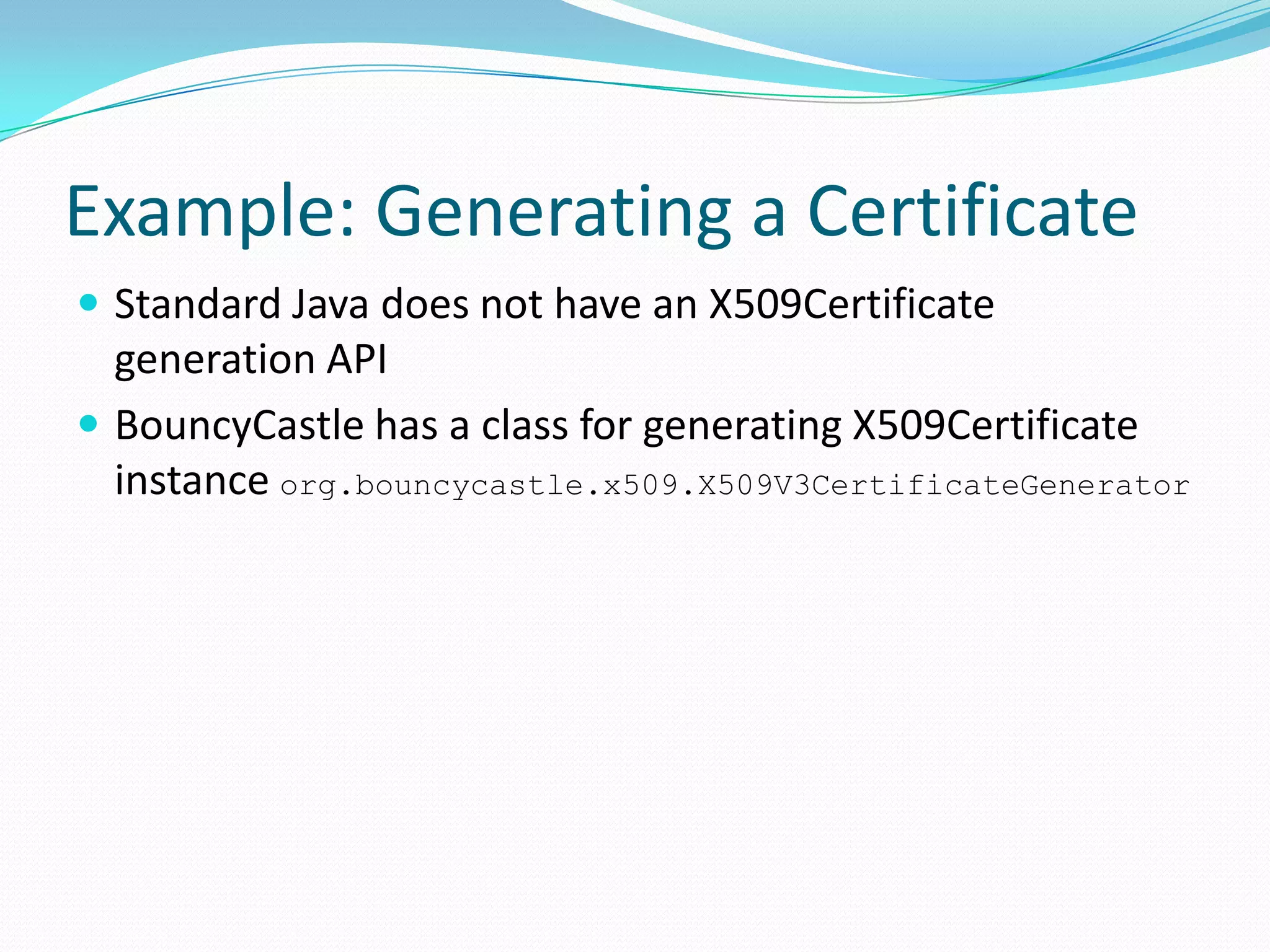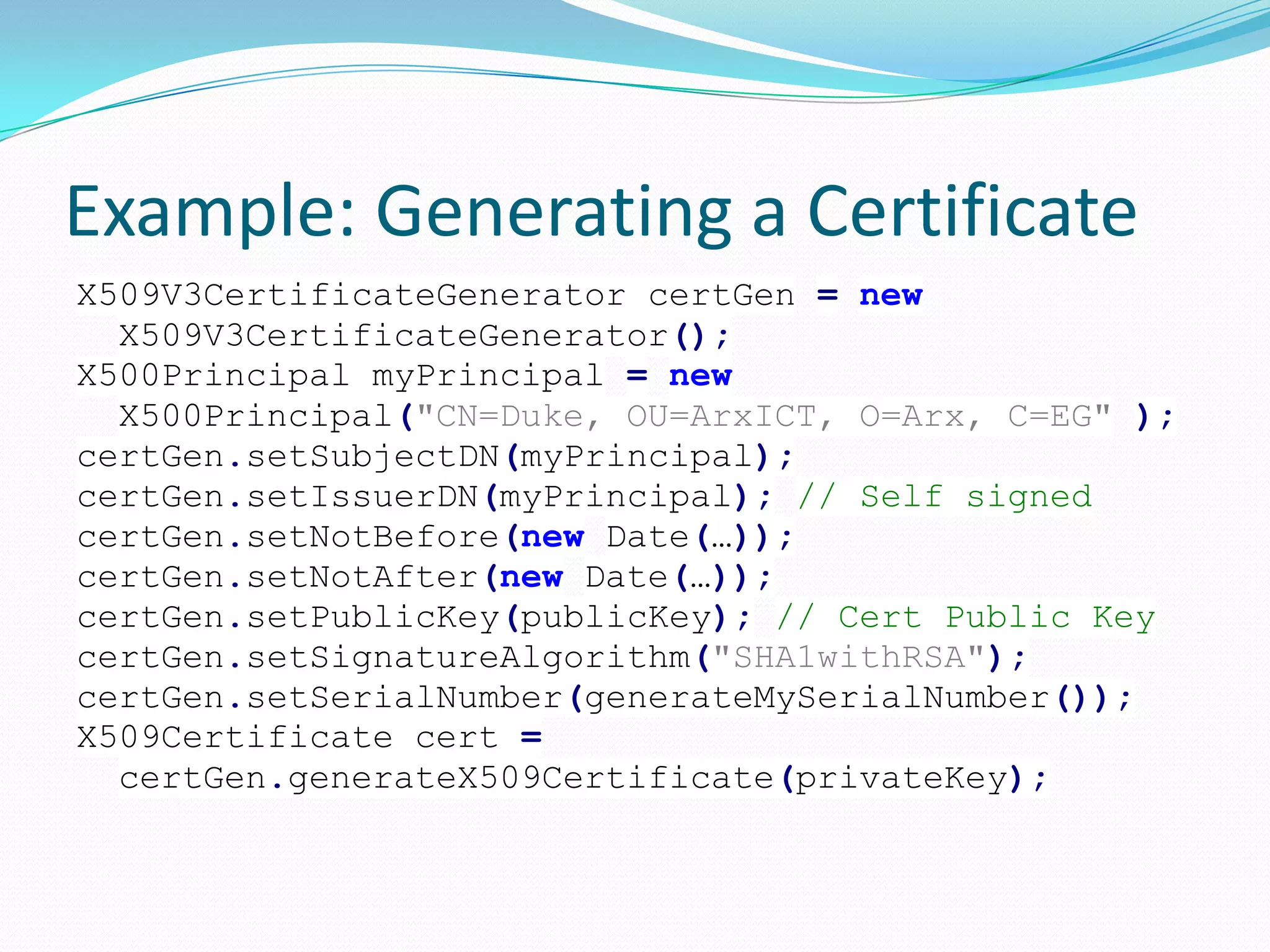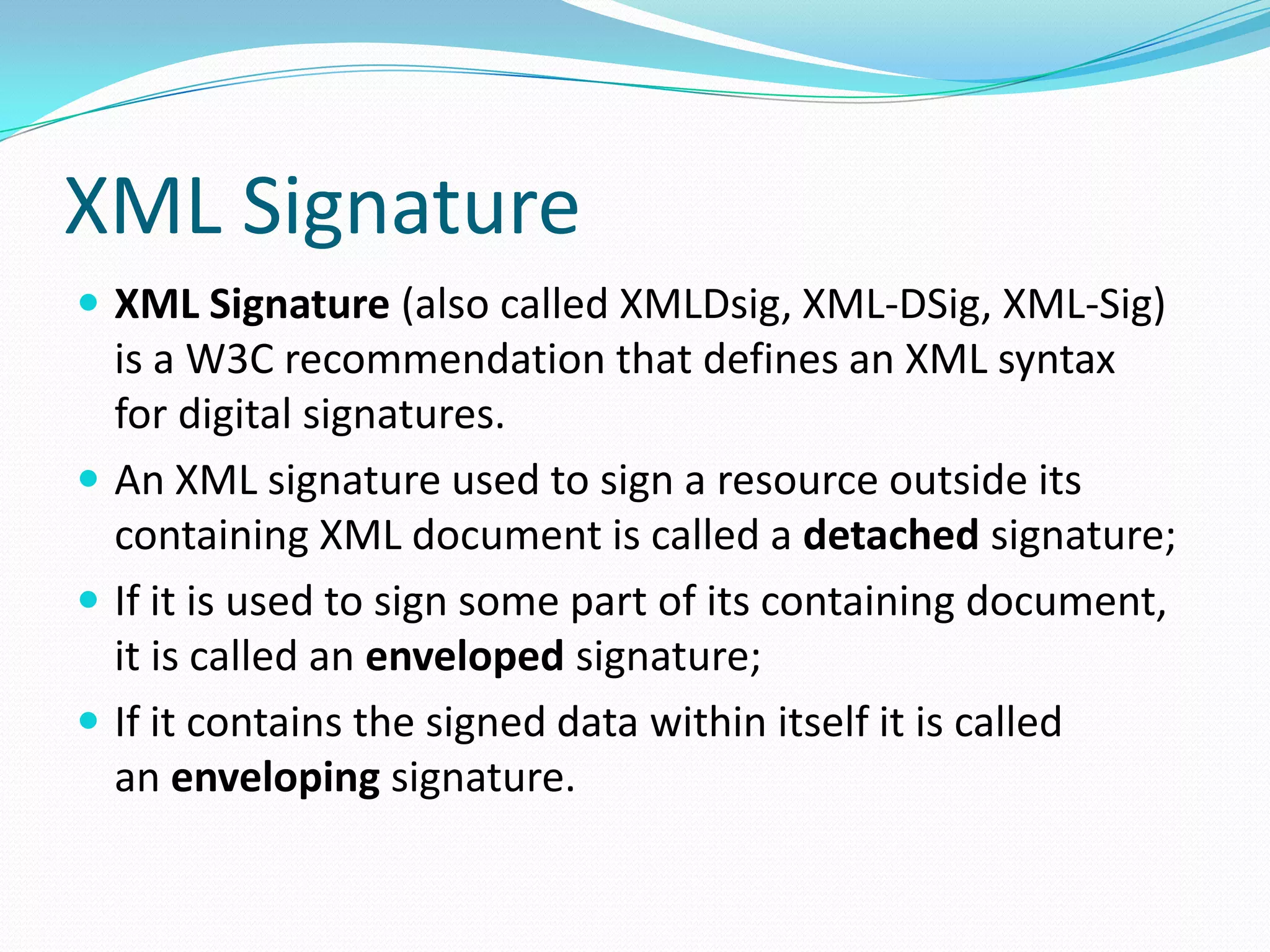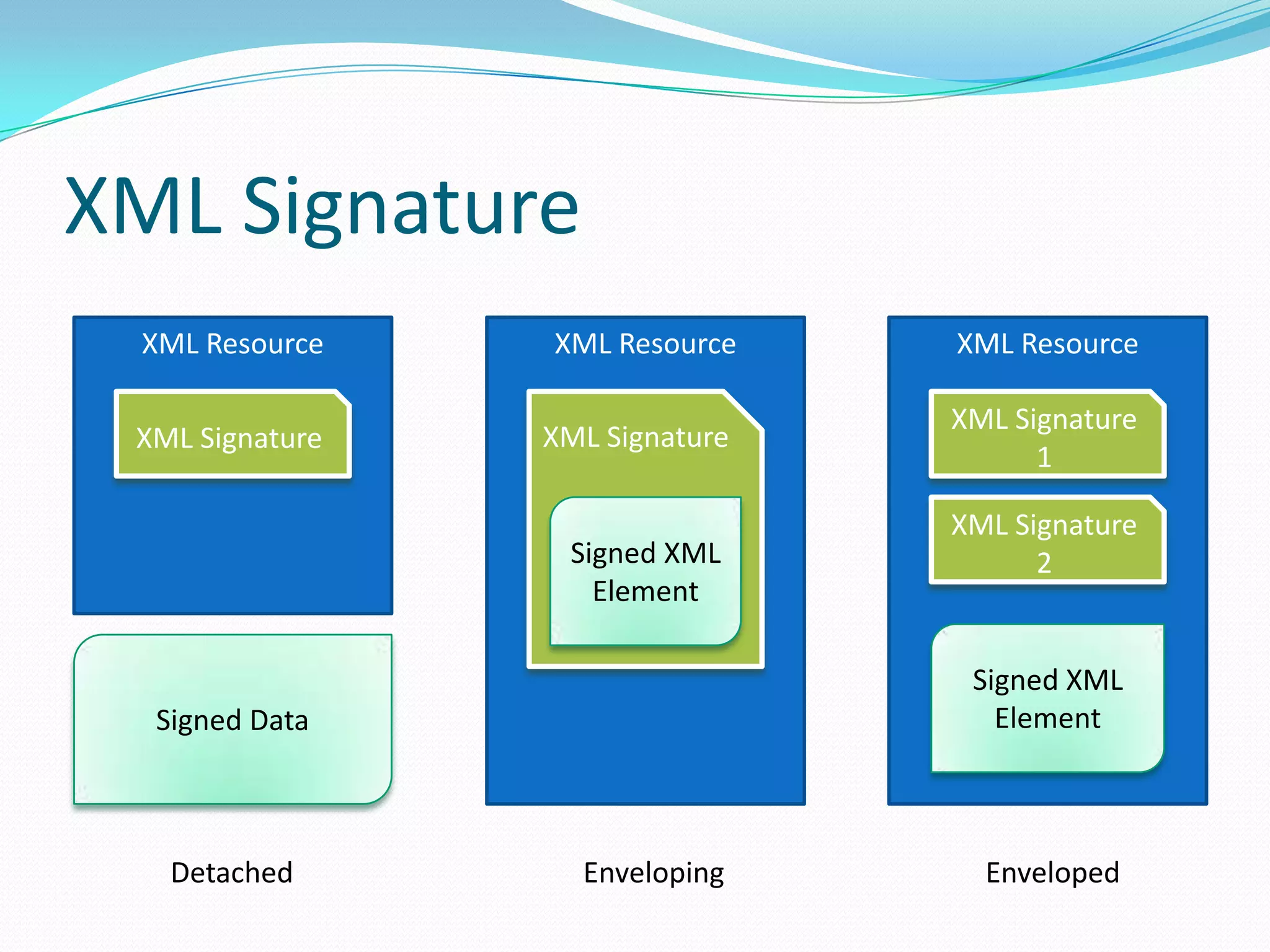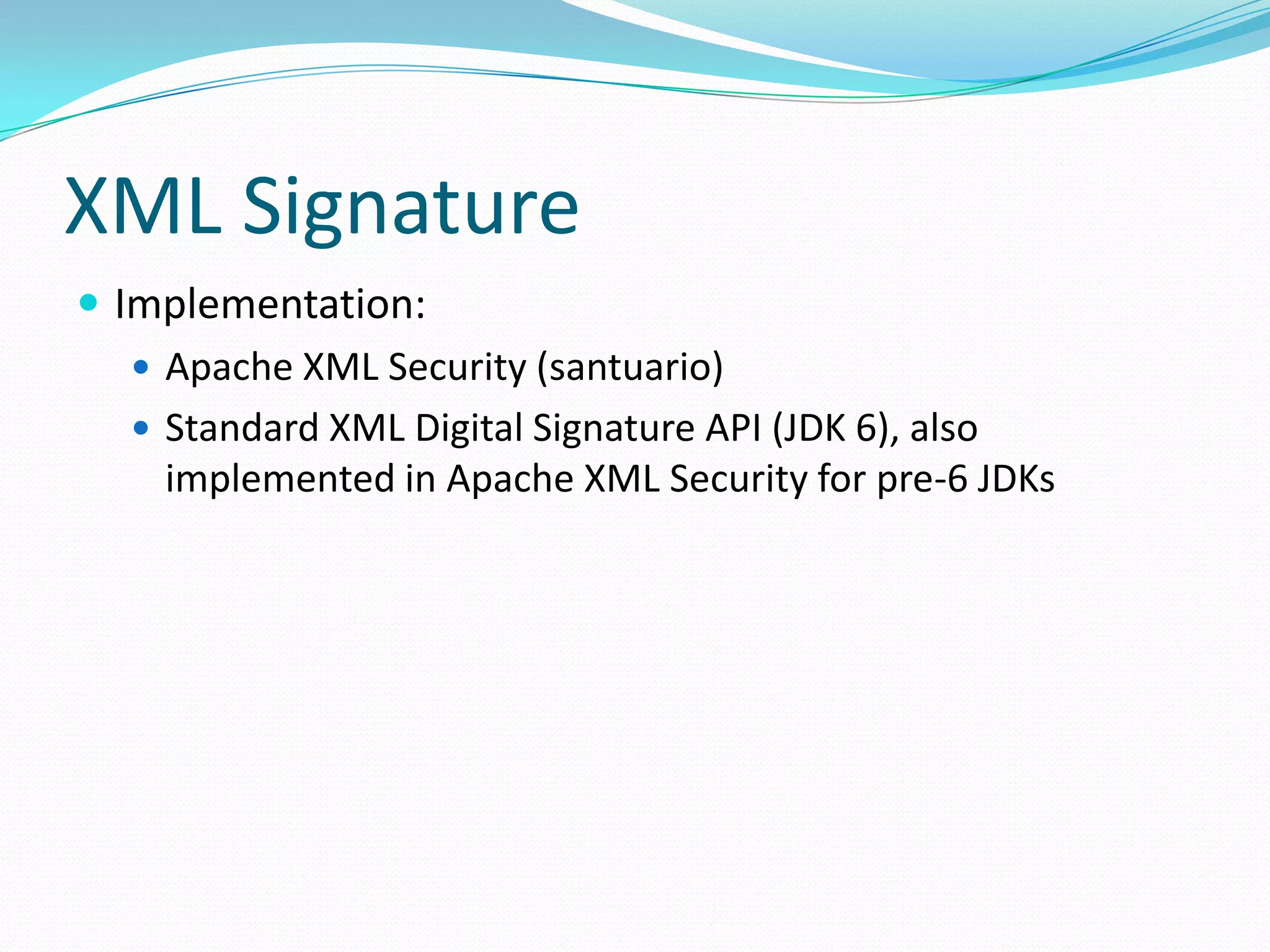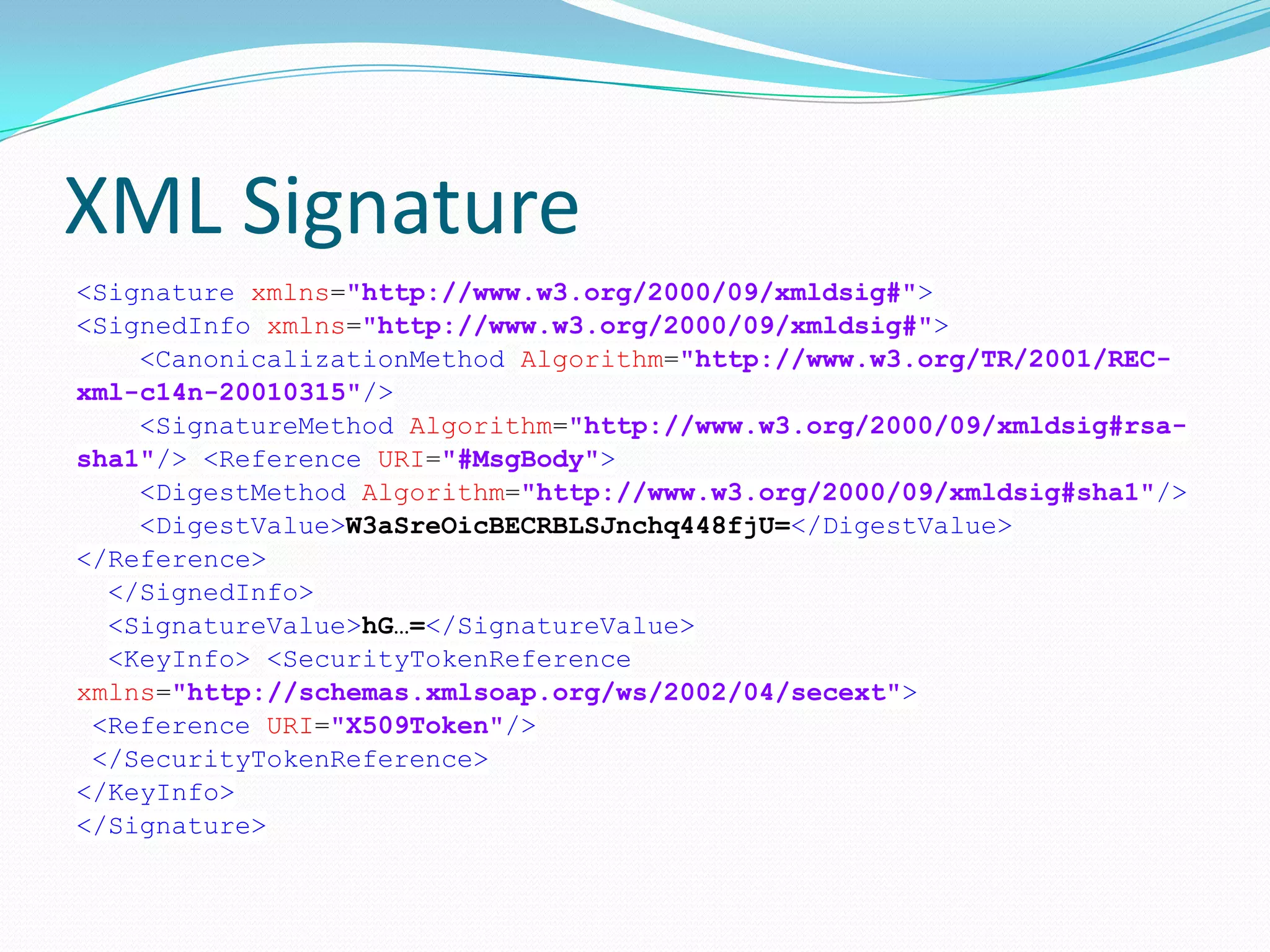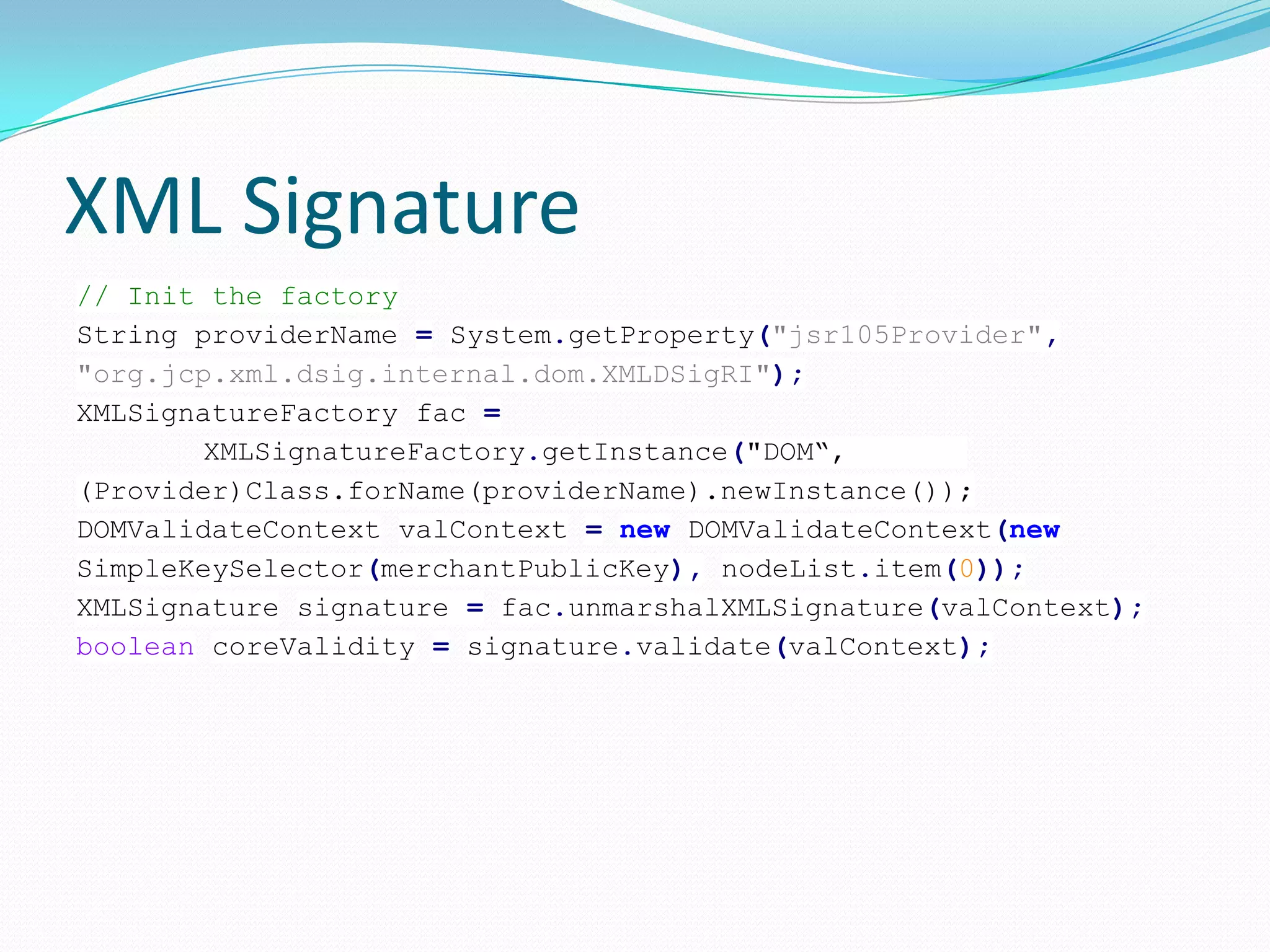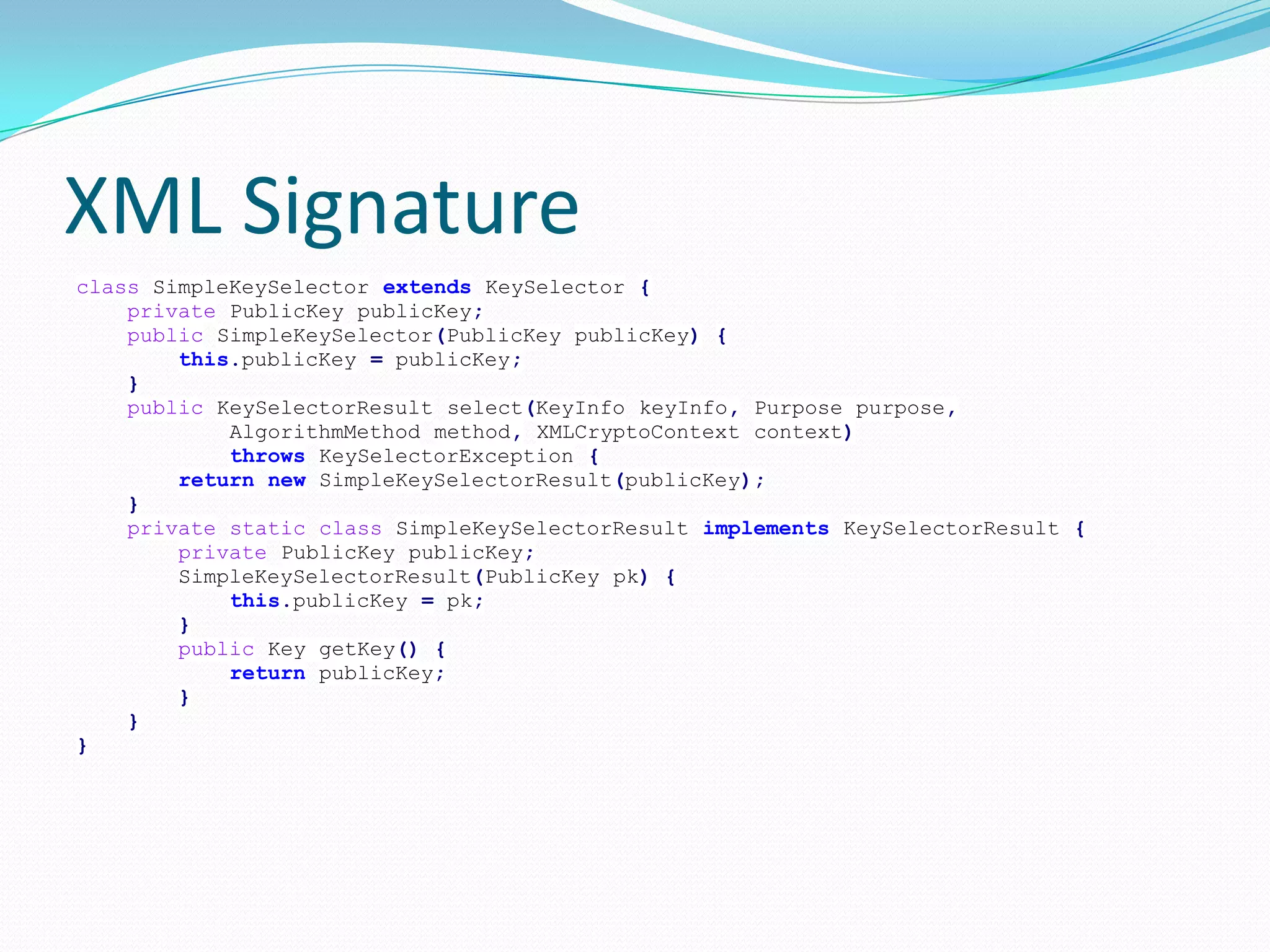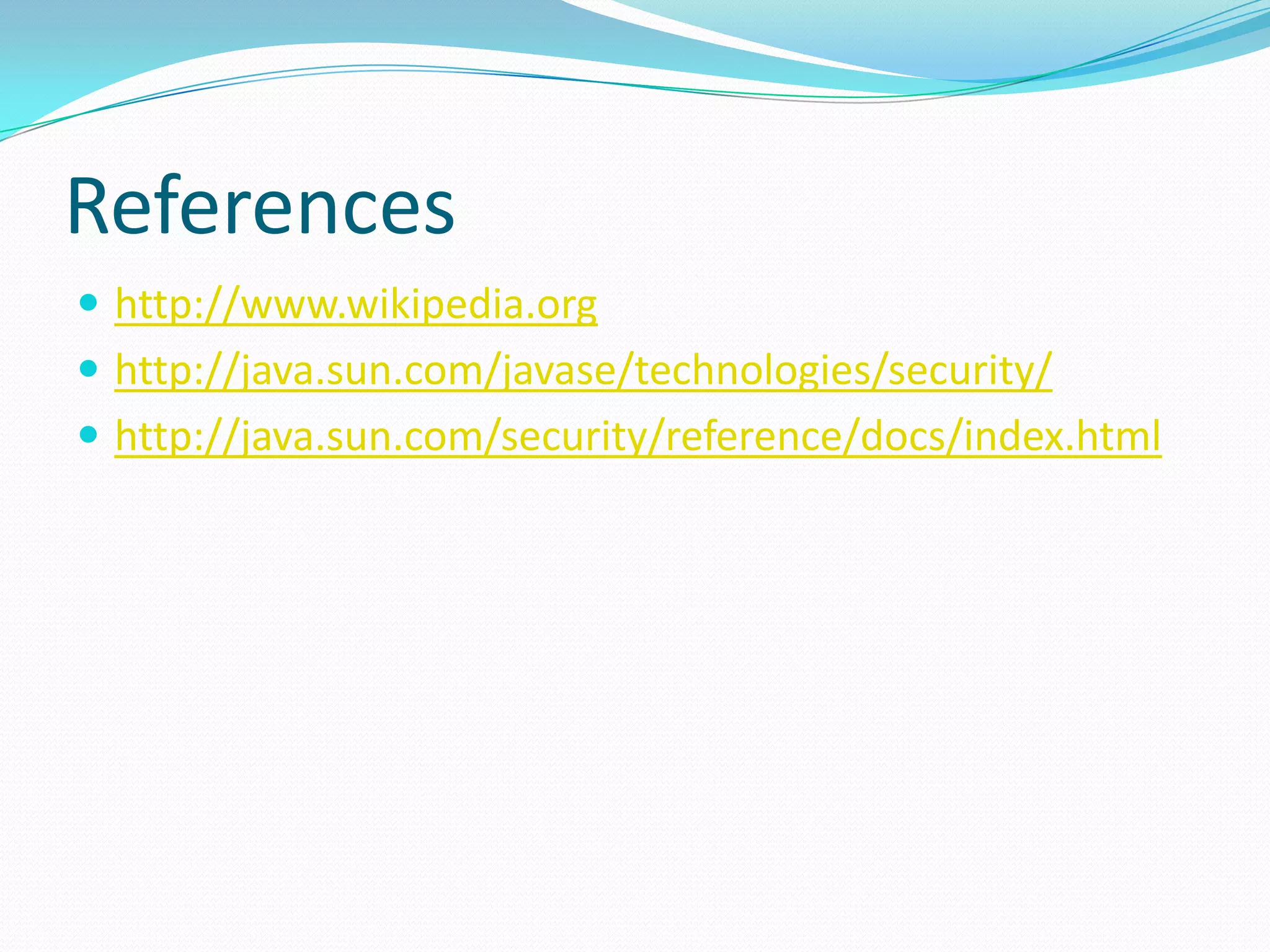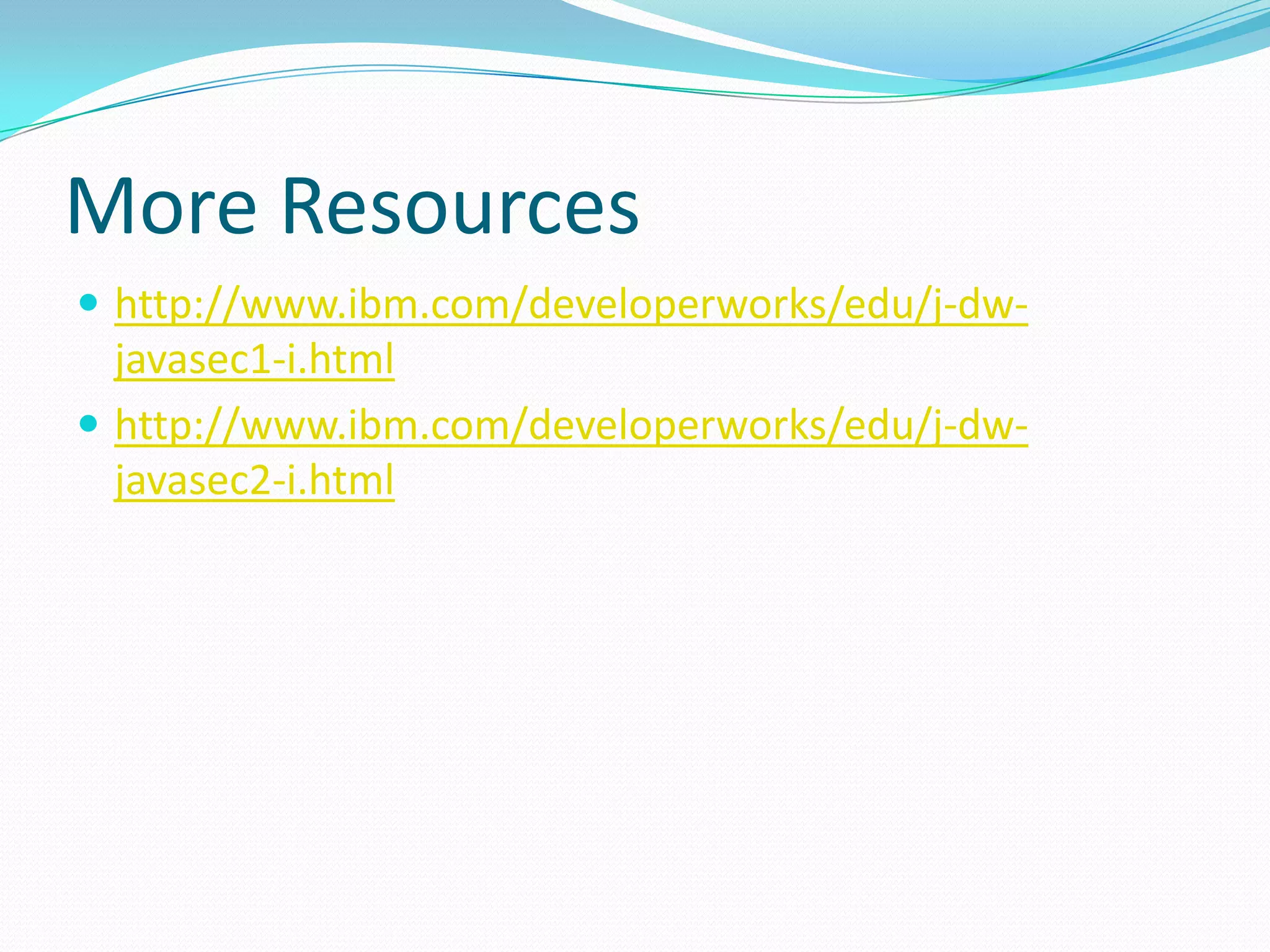This document provides an introduction to security concepts like cryptography, digital signatures, and Java security. It discusses symmetric and public key cryptography, hash functions, and digital signatures. It also describes Java security APIs for cryptography, access control, and PKI. Examples are given for cryptographic operations in Java like encrypting/decrypting data, signing/verifying signatures, and working with key stores. The document also discusses XML signature standards and implementations.
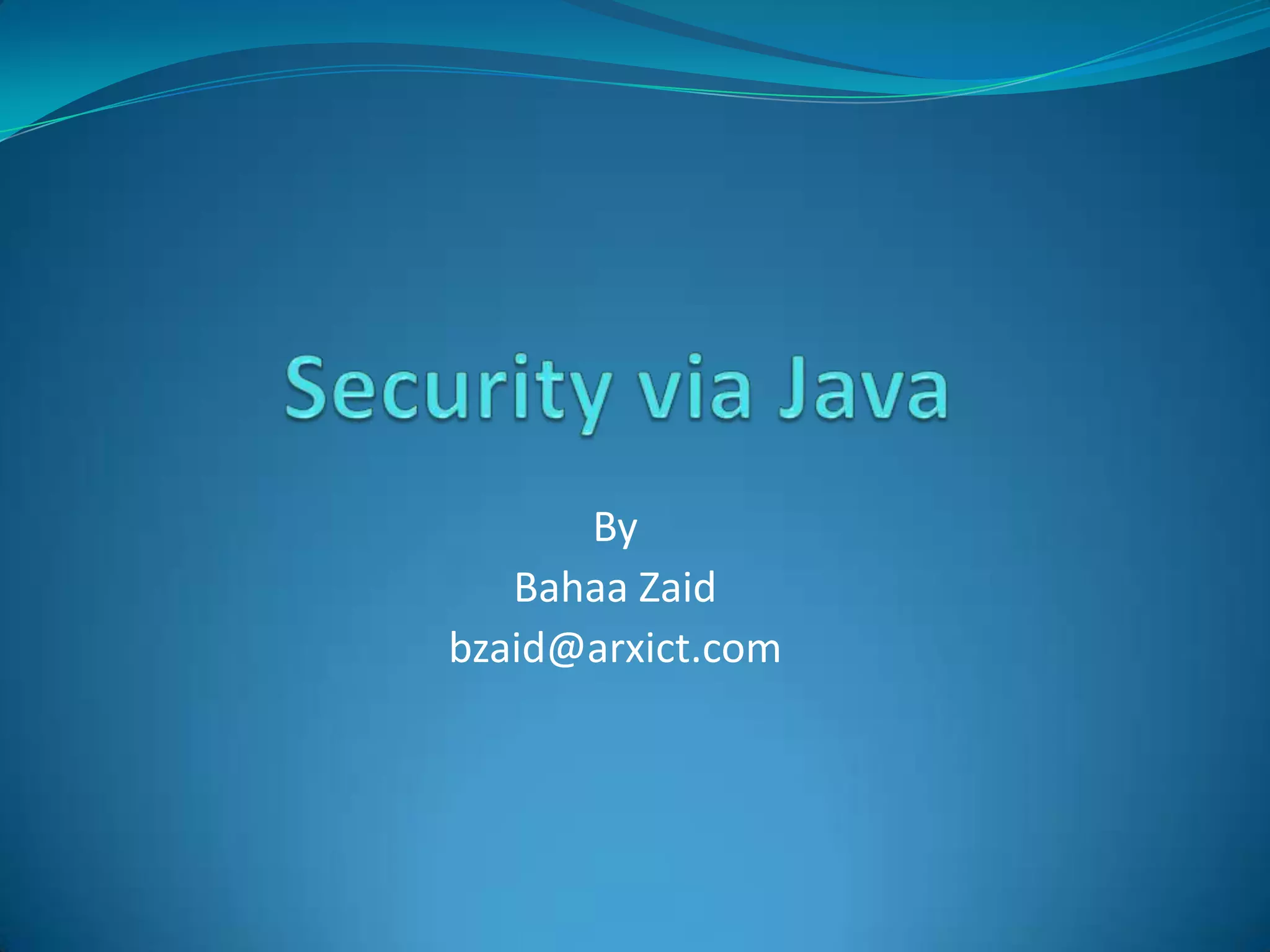
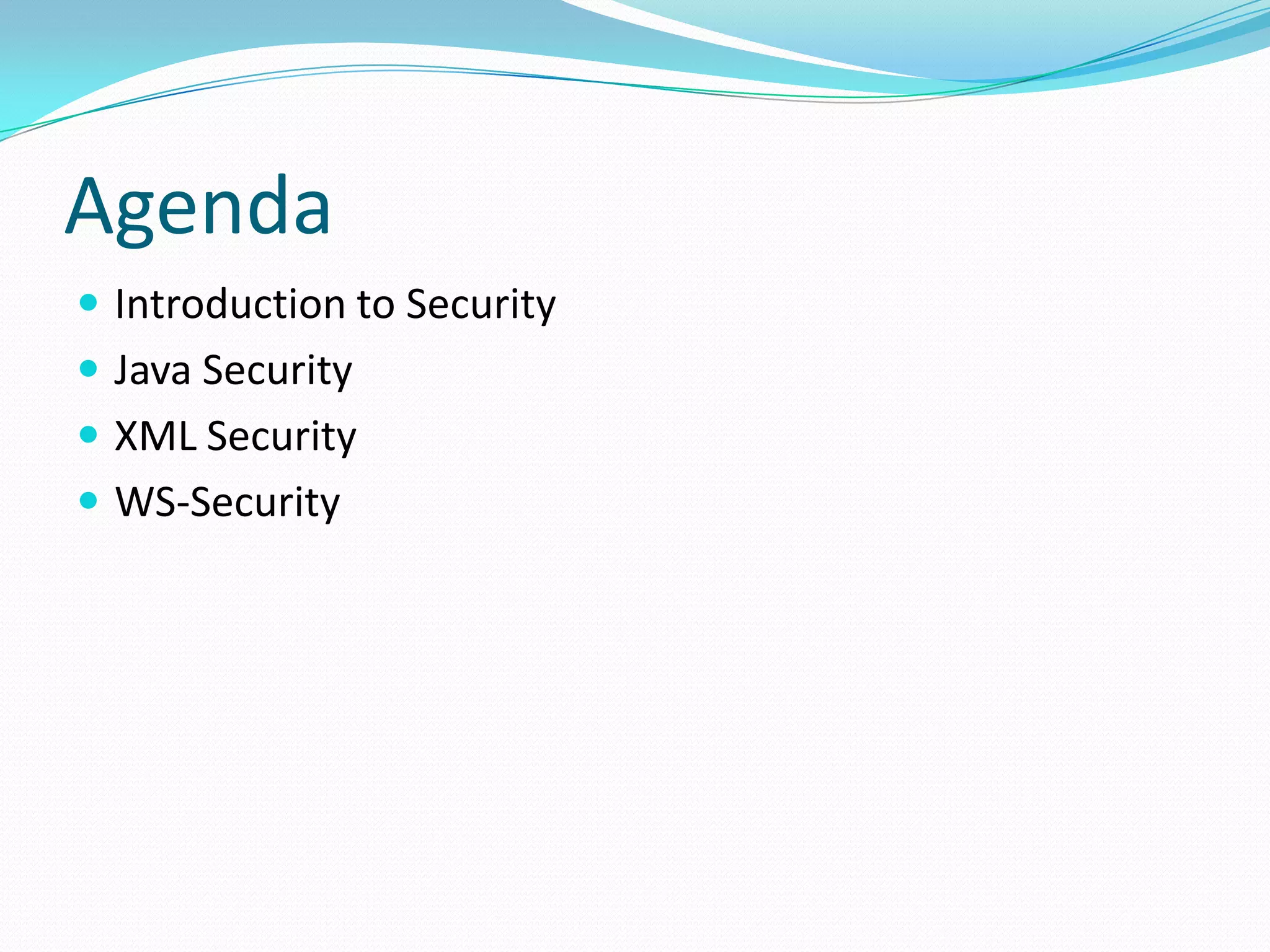
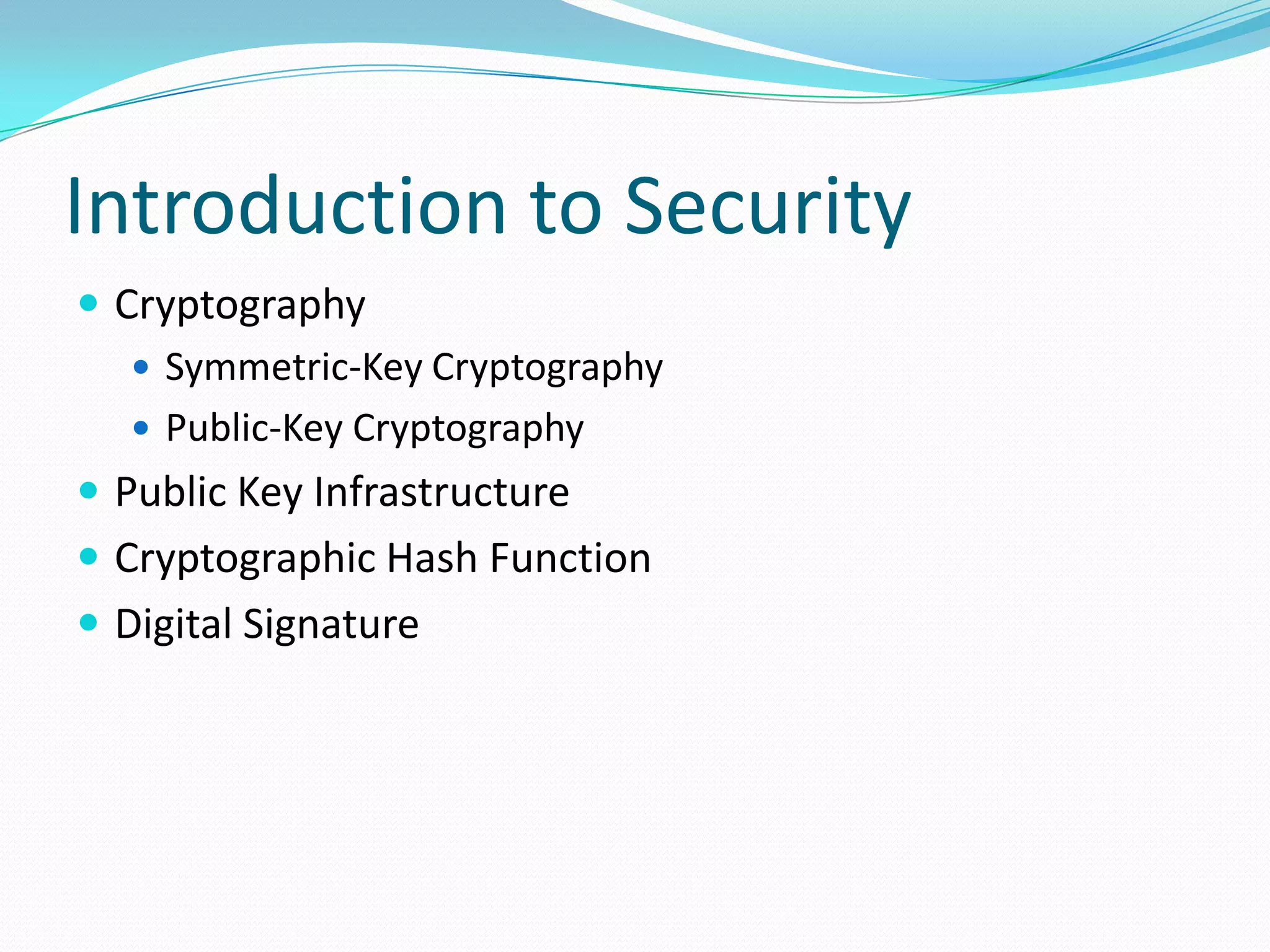
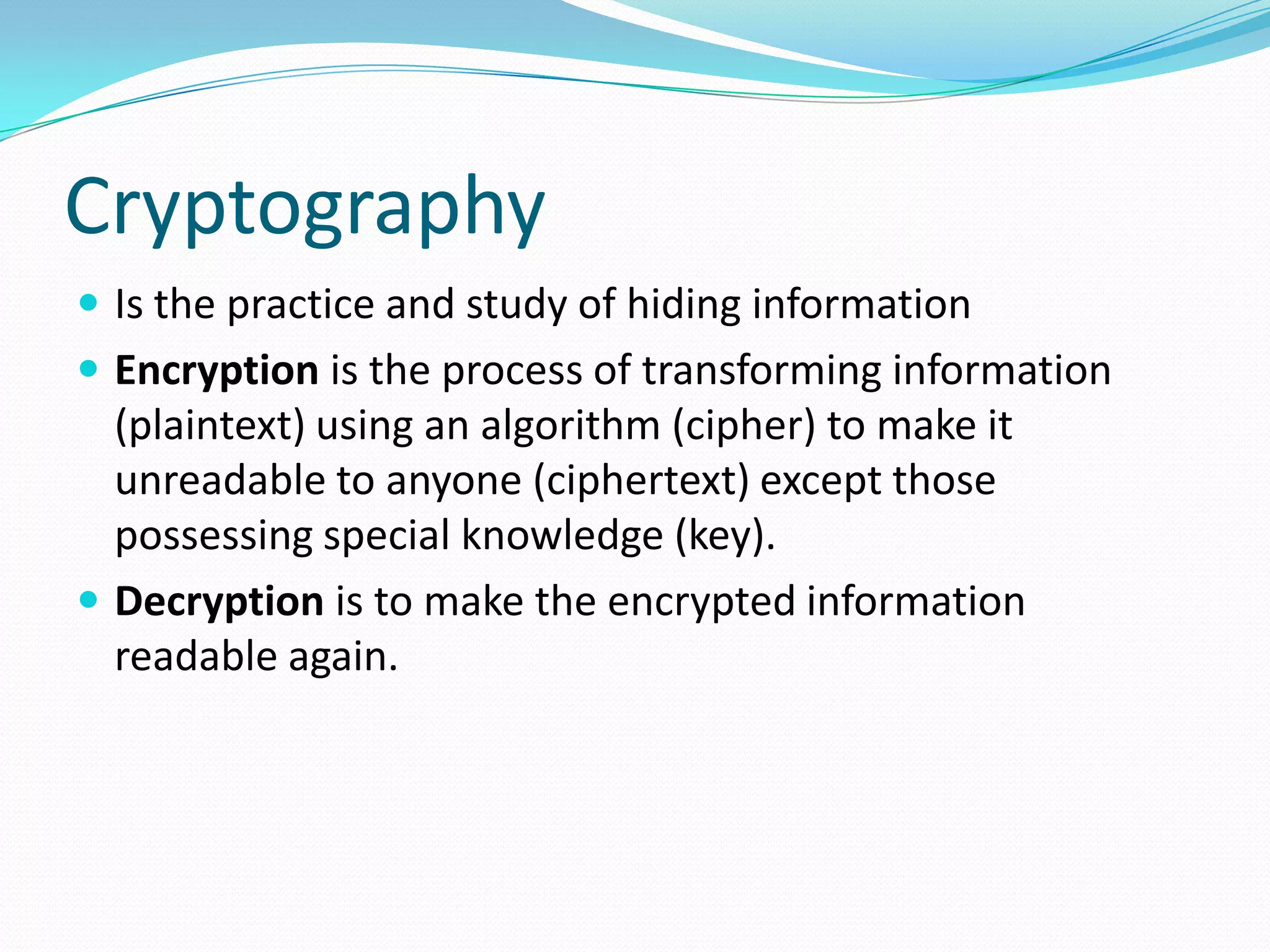
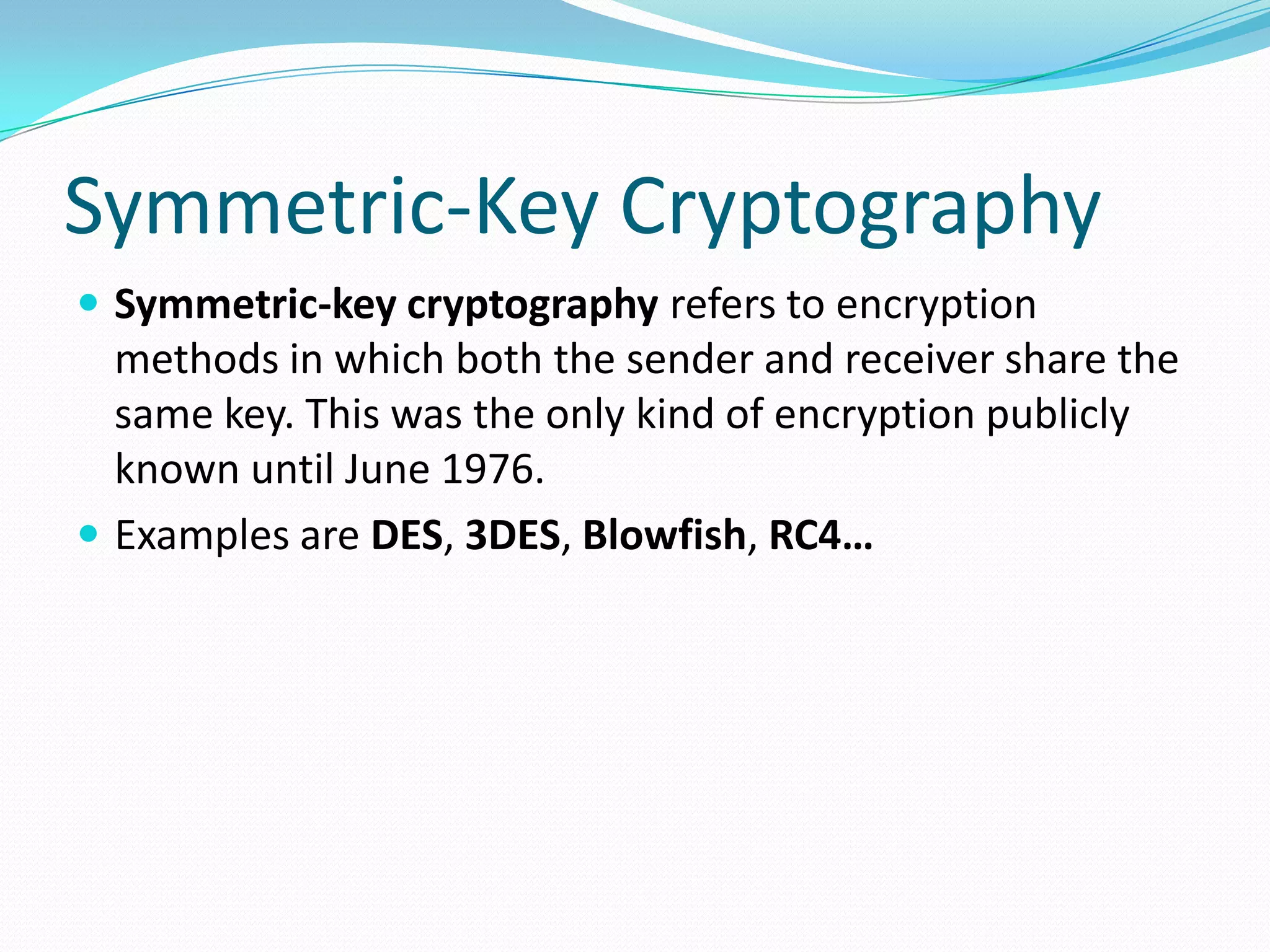
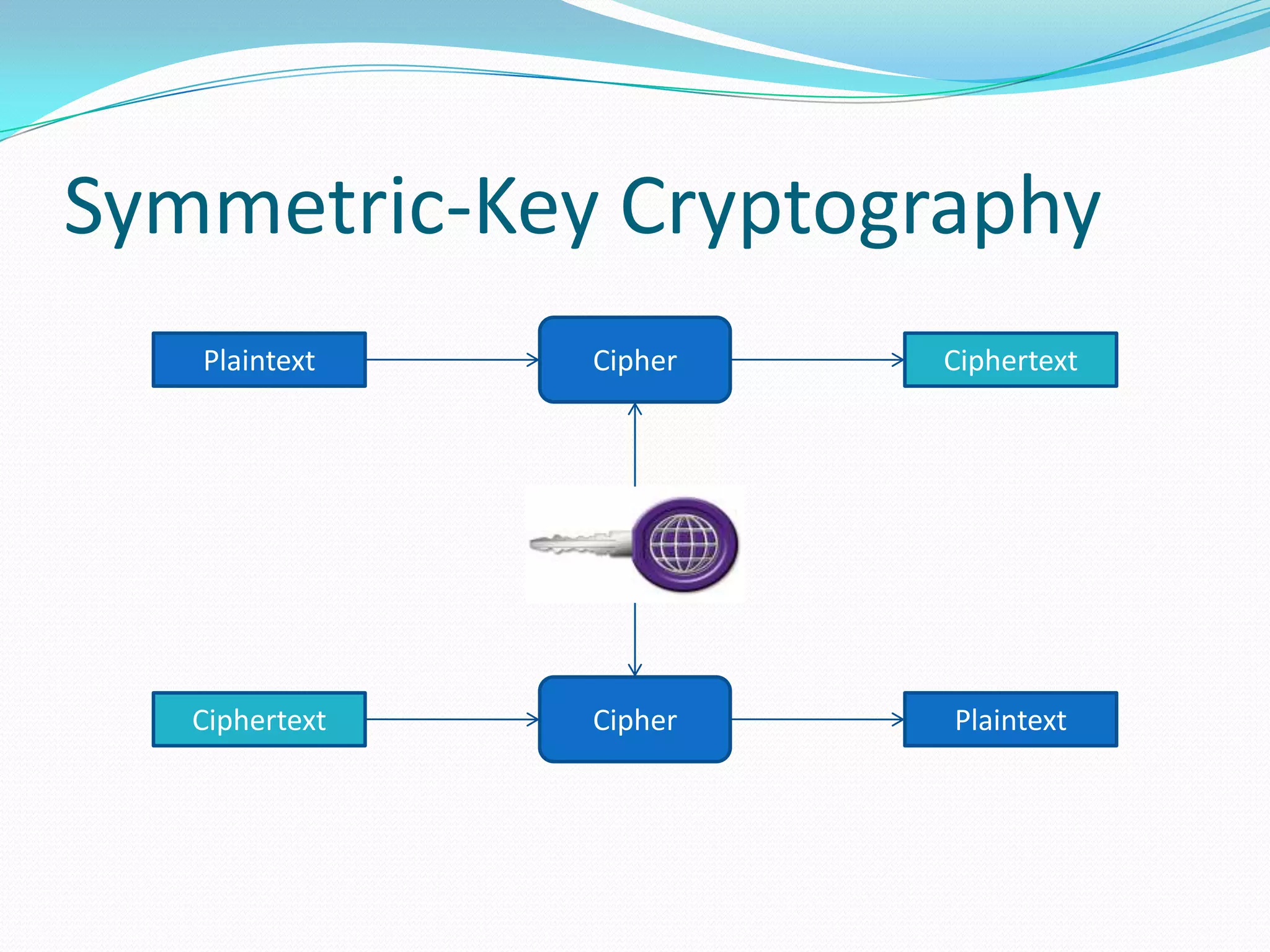
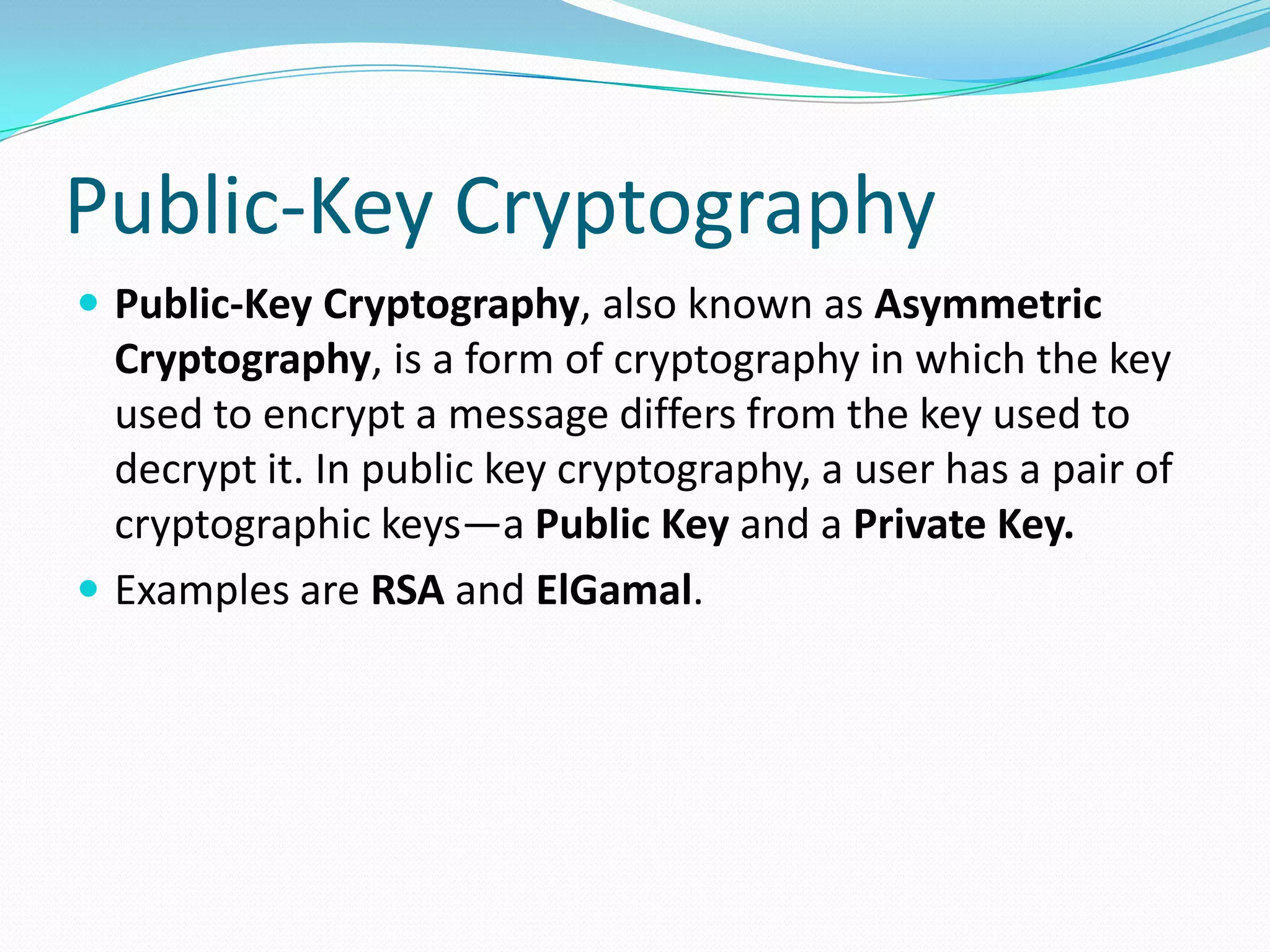
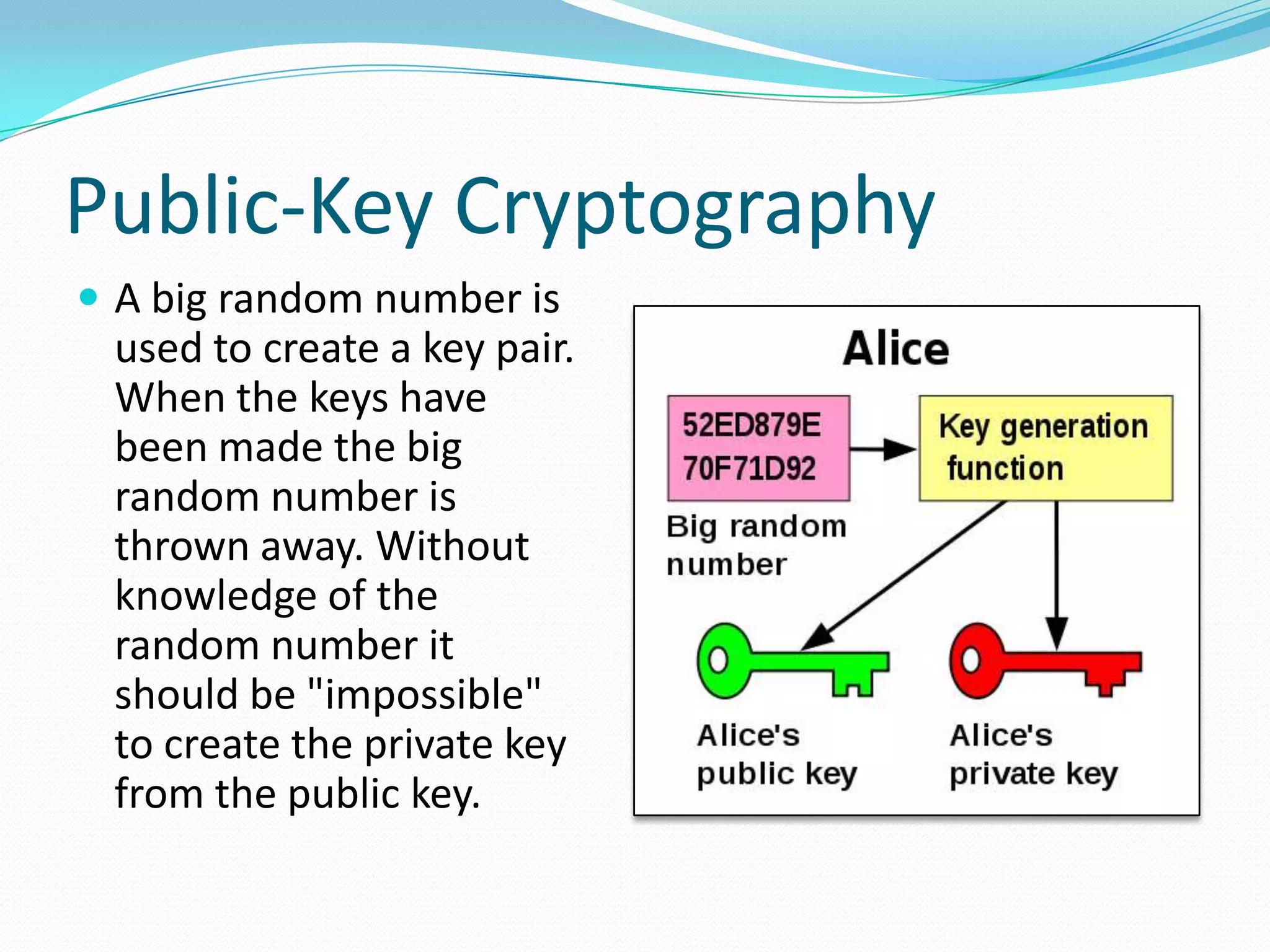
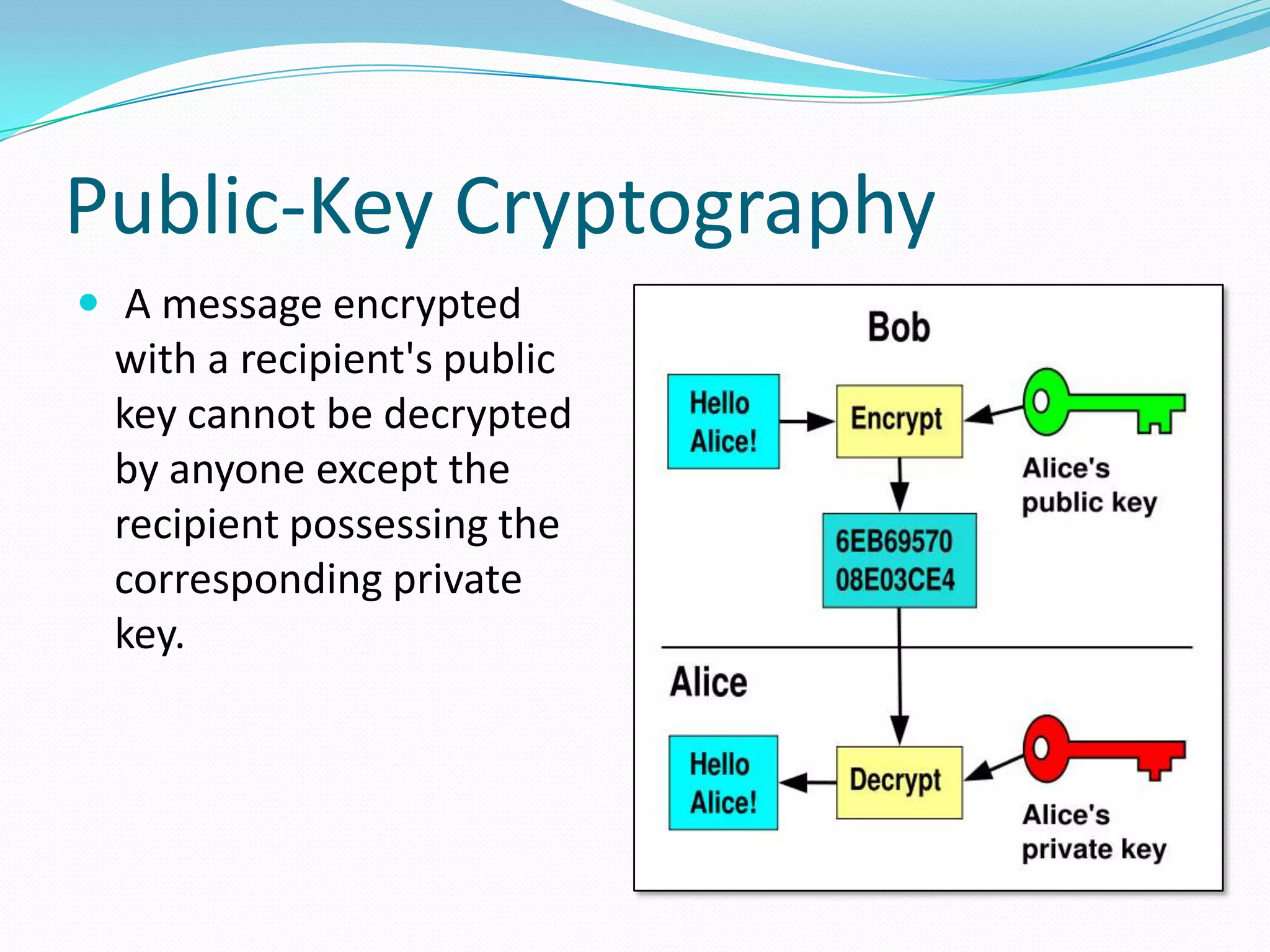
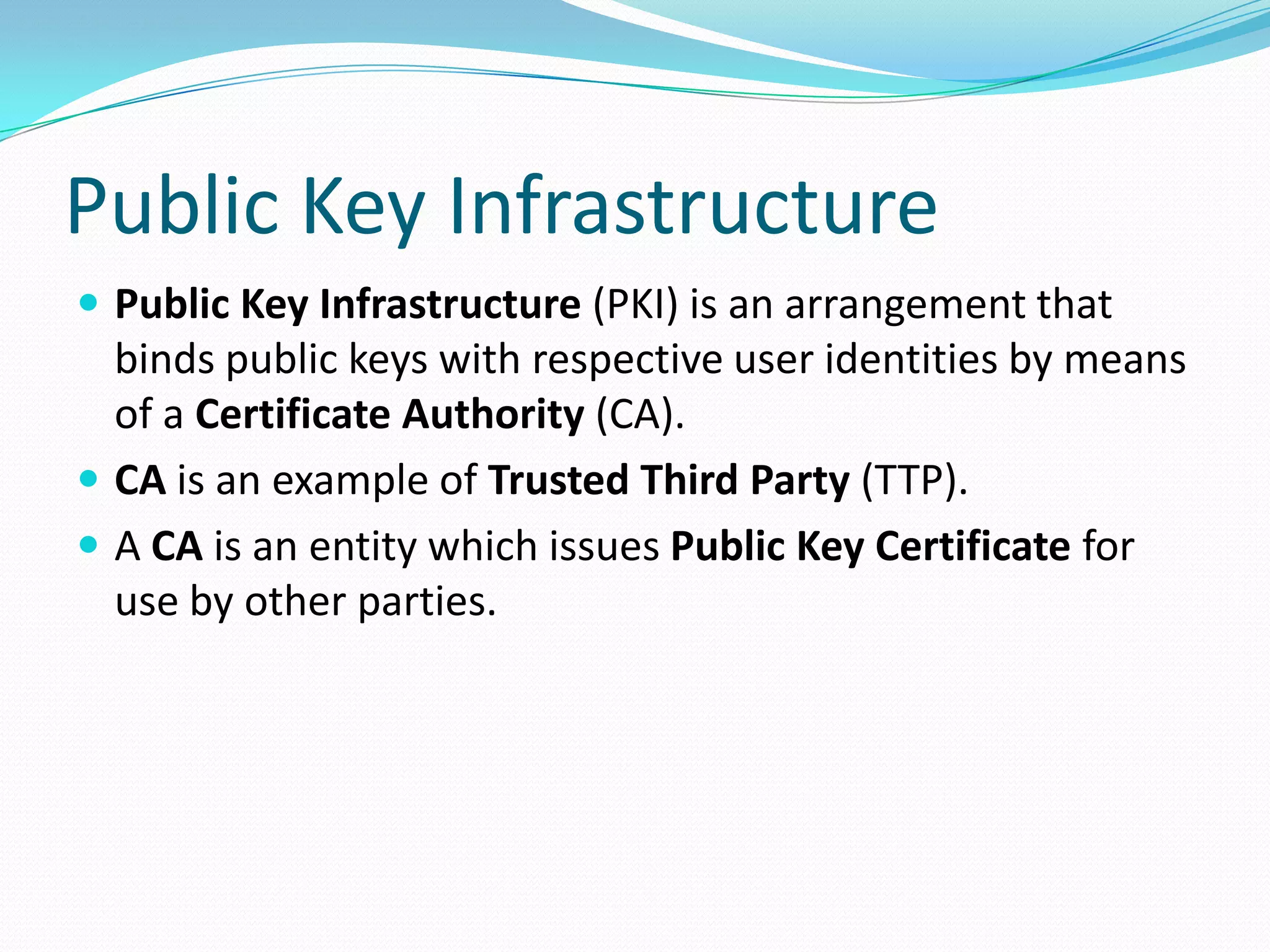
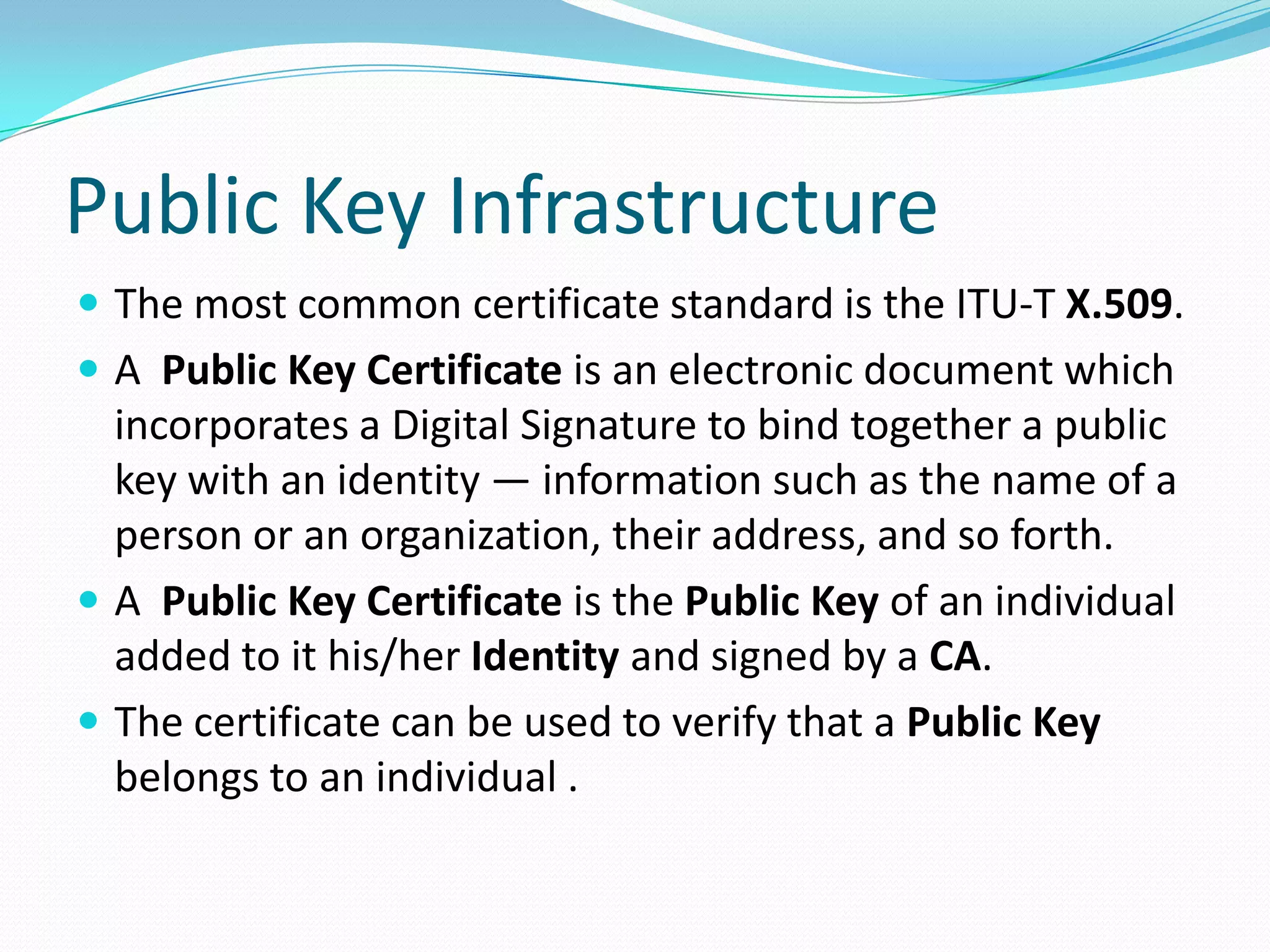
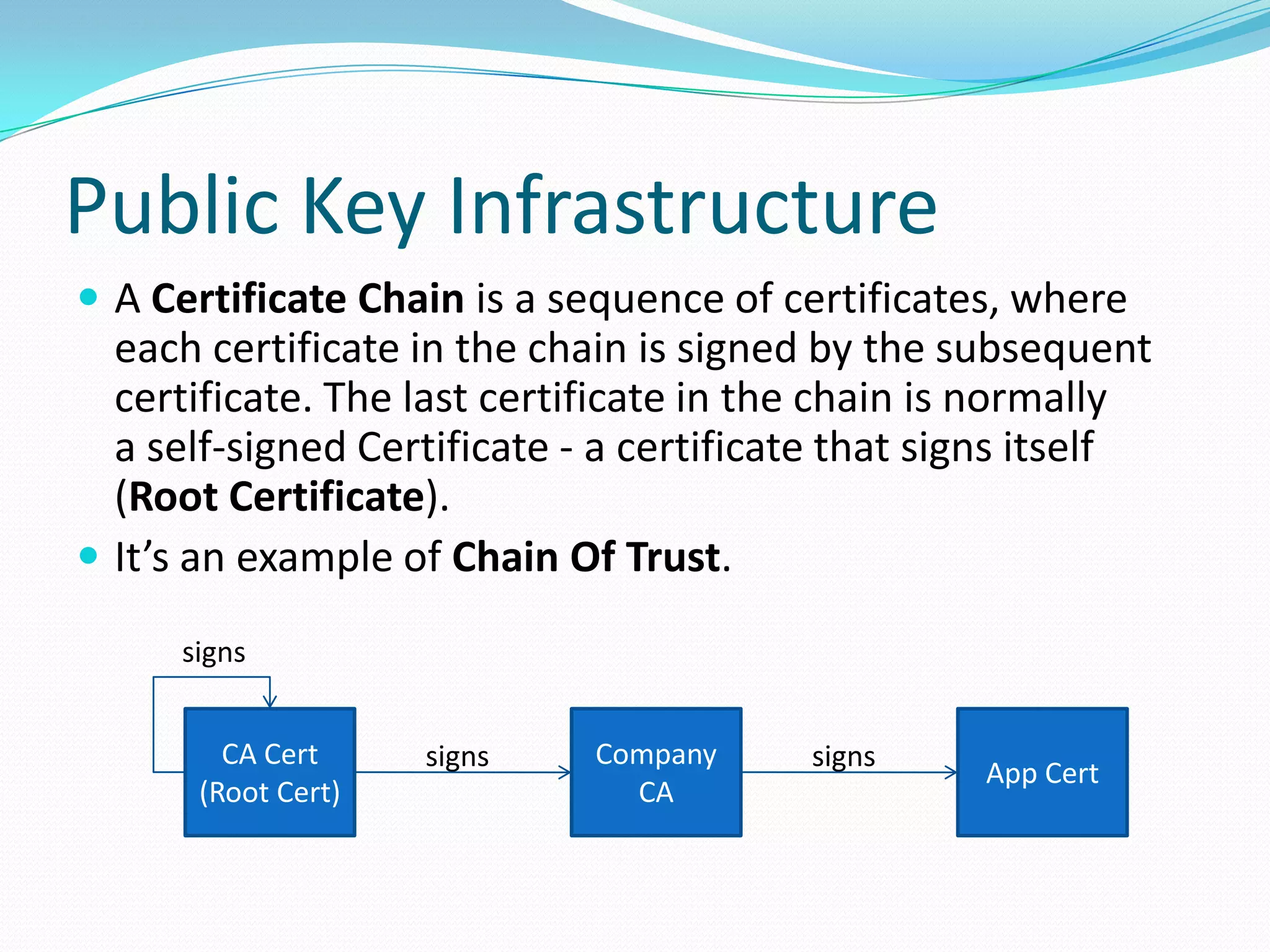
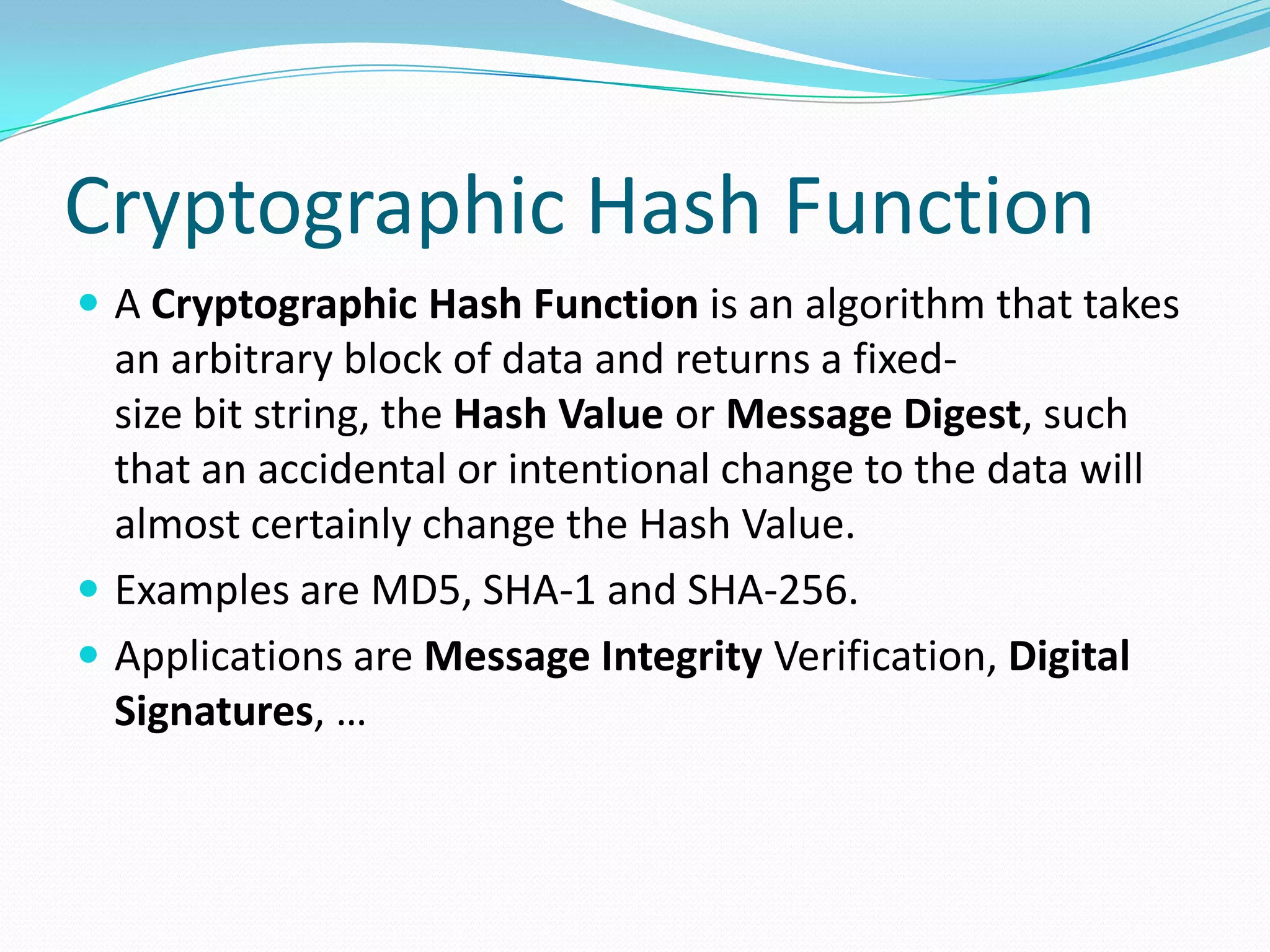
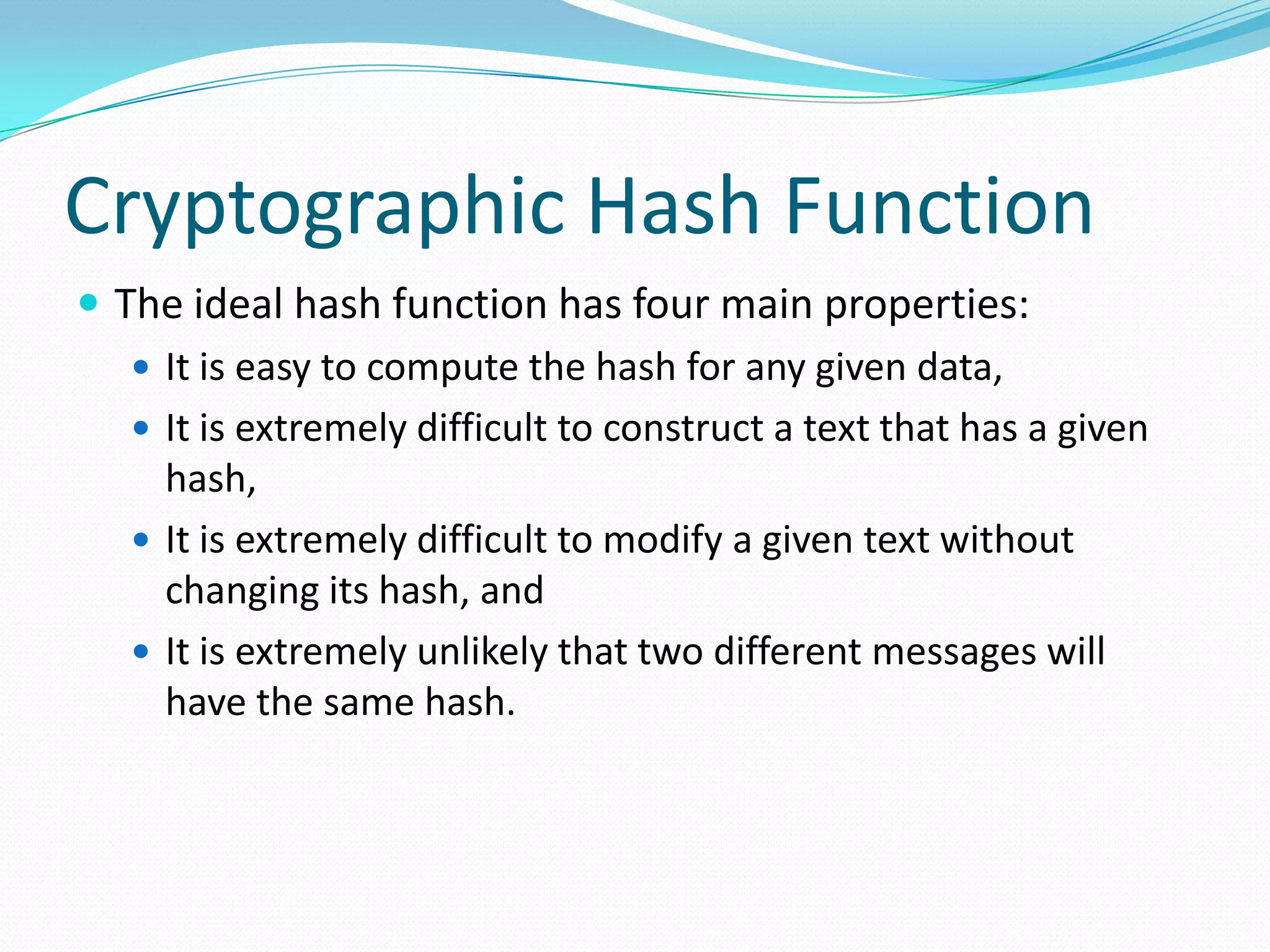
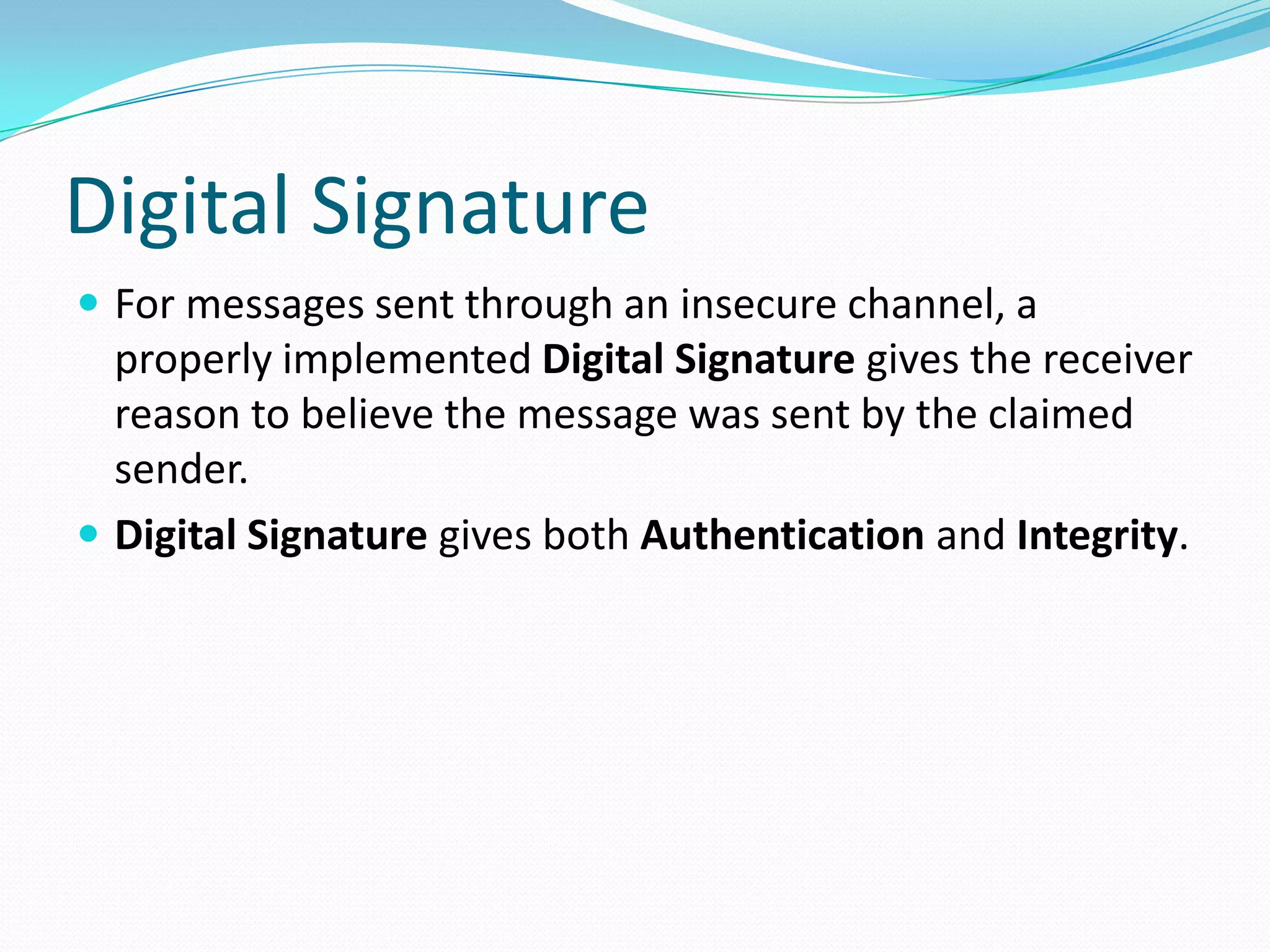
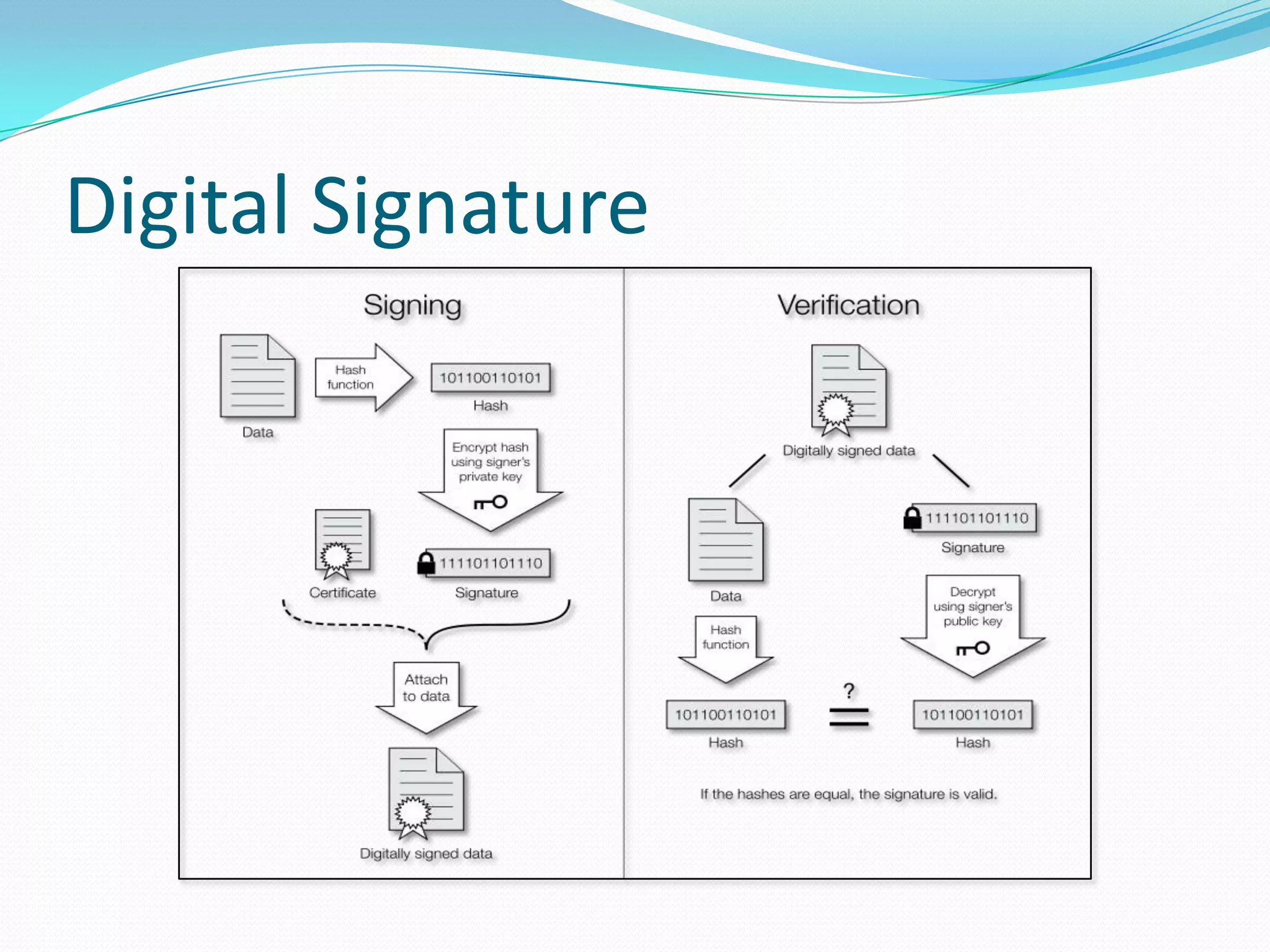
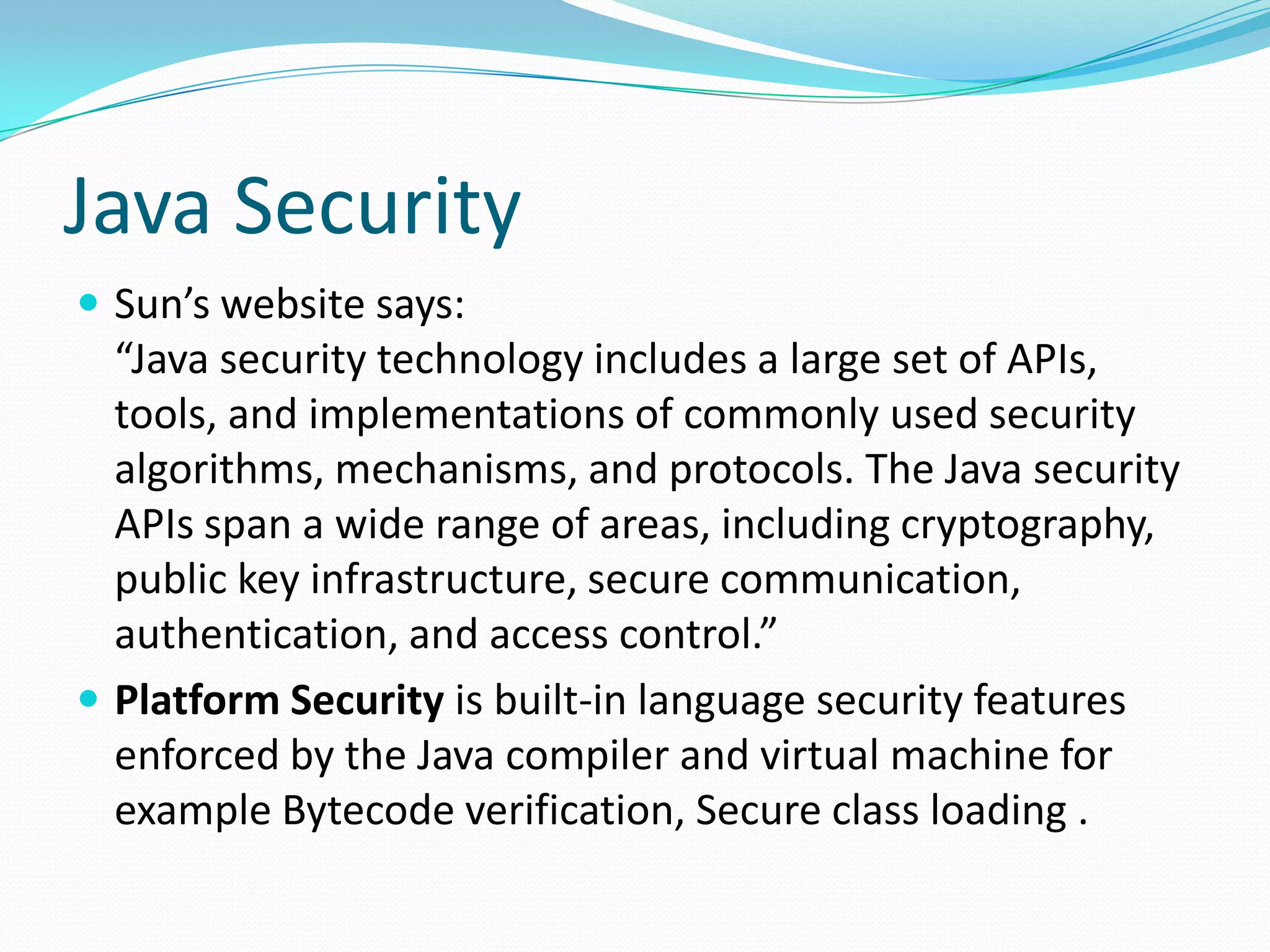
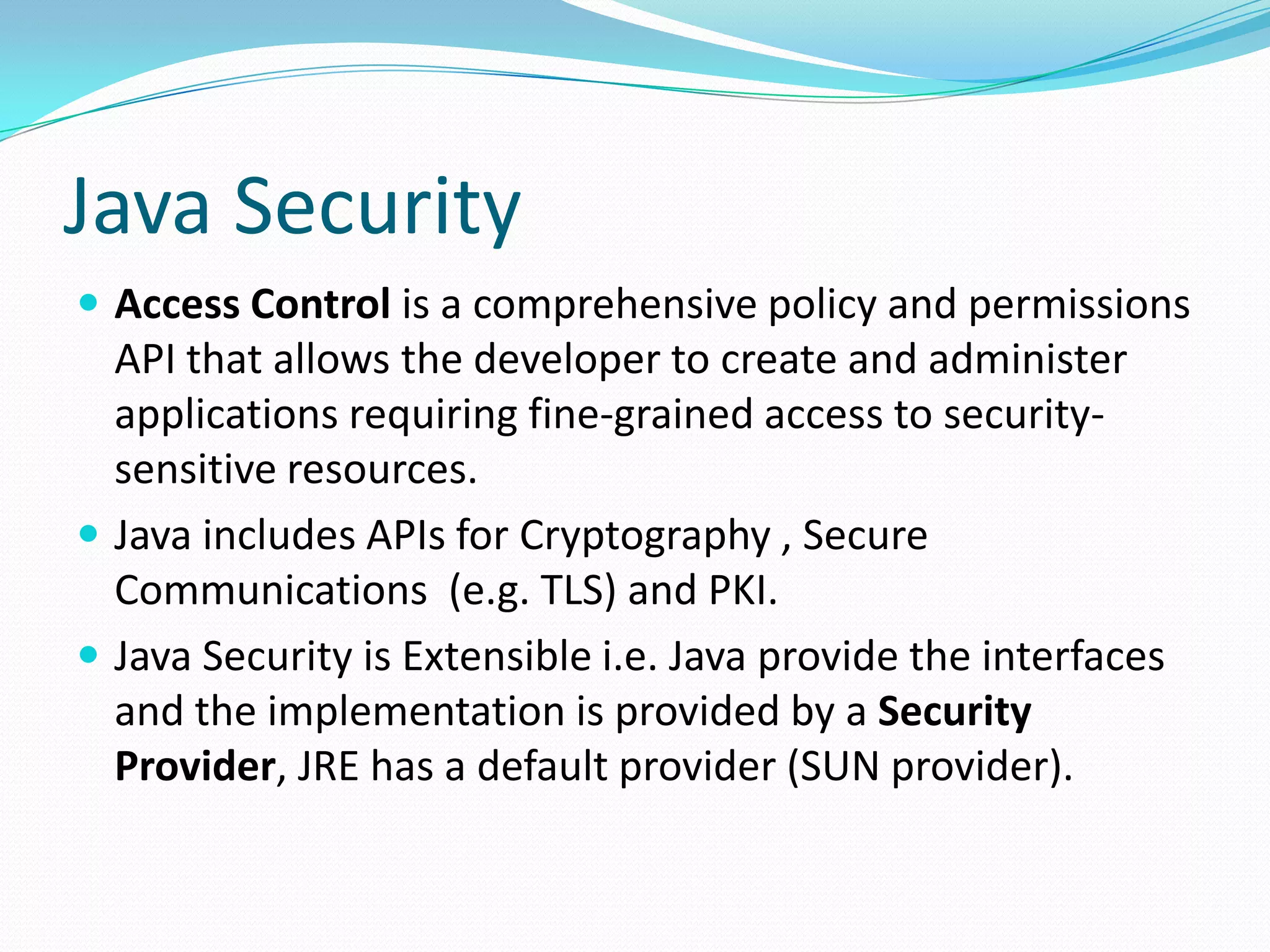
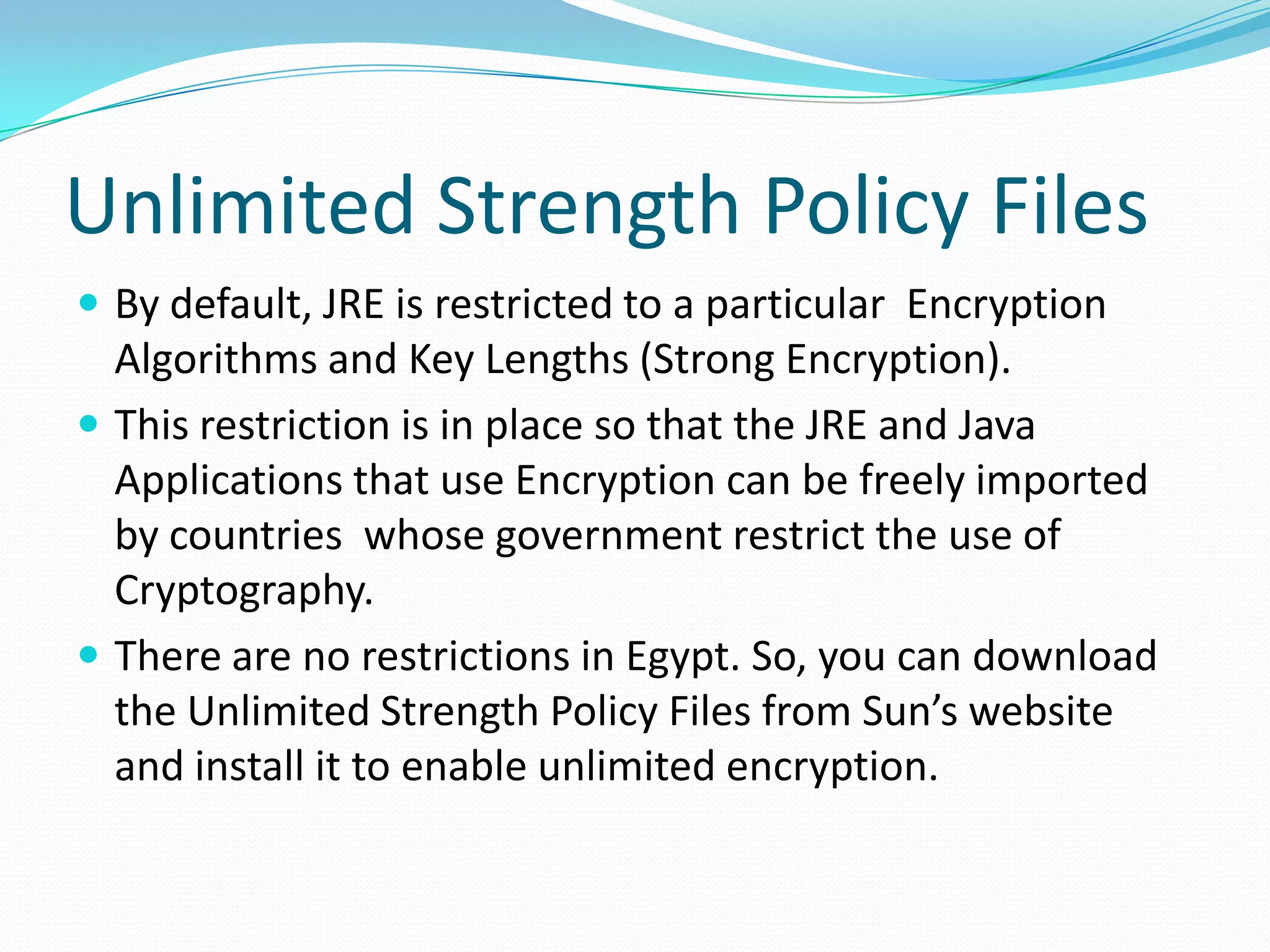
![Example: Computing The Hash of a
byte[]
MessageDigest msgDigest =
MessageDigest.getInstance("MD5");
msgDigest.update(plainText); //byte[]
byte[] digest = msgDigest.digest();](https://image.slidesharecdn.com/security-bzaid-2009-01-13-100620020512-phpapp01/75/Security-via-Java-20-2048.jpg)
![Example: Private Key Crypto
KeyGenerator keyGen =
KeyGenerator.getInstance("DES");
keyGen.init(56);
Key key = keyGen.generateKey();
…
Cipher cipher =
Cipher.getInstance("DES/ECB/PKCS5Padding");
cipher.init(Cipher.ENCRYPT_MODE, key);
byte[] cipherText = cipher.doFinal(plainText);
…
cipher.init(Cipher.DECRYPT_MODE, key);
byte[] newPlainText =
cipher.doFinal(cipherText);](https://image.slidesharecdn.com/security-bzaid-2009-01-13-100620020512-phpapp01/75/Security-via-Java-21-2048.jpg)
![Example: Public Key Crypto
KeyPairGenerator keyGen =
KeyPairGenerator.getInstance("RSA");
keyGen.initialize(1024);
KeyPair key = keyGen.generateKeyPair();
…
Cipher cipher =
Cipher.getInstance("RSA/ECB/PKCS1Padding");
cipher.init(Cipher.ENCRYPT_MODE, key.getPublic());
byte[] cipherText = cipher.doFinal(plainText);
…
cipher.init(Cipher.DECRYPT_MODE, key.getPrivate());
byte[] newPlainText = cipher.doFinal(cipherText);](https://image.slidesharecdn.com/security-bzaid-2009-01-13-100620020512-phpapp01/75/Security-via-Java-22-2048.jpg)
![Example: Digital Signature
KeyPairGenerator keyGen =
KeyPairGenerator.getInstance("RSA");
keyGen.initialize(1024);
KeyPair key = keyGen.generateKeyPair();
…
Signature sig = Signature.getInstance("MD5WithRSA");
sig.initSign(key.getPrivate());
sig.update(plainText);
byte[] signature = sig.sign();
…
sig.initVerify(key.getPublic());
sig.update(plainText);
if (sig.verify(signature)) {…}](https://image.slidesharecdn.com/security-bzaid-2009-01-13-100620020512-phpapp01/75/Security-via-Java-23-2048.jpg)
![Example: Accessing Key Stores
// Creating new one
KeyStore keyStore = KeyStore.getInstance("PKCS12");
keyStore.load(null, null);
…
// Opening Existing one
KeyStore keyStore = KeyStore.getInstance("PKCS12");
keyStore.load(new FileInputStream(filename),
"password".toCharArray());
…
// Adding Entry
keyStore.setKeyEntry(
"somealias",privateKey,
"password".toCharArray(),
new Certificate[] {myCert, caCert});
…](https://image.slidesharecdn.com/security-bzaid-2009-01-13-100620020512-phpapp01/75/Security-via-Java-24-2048.jpg)
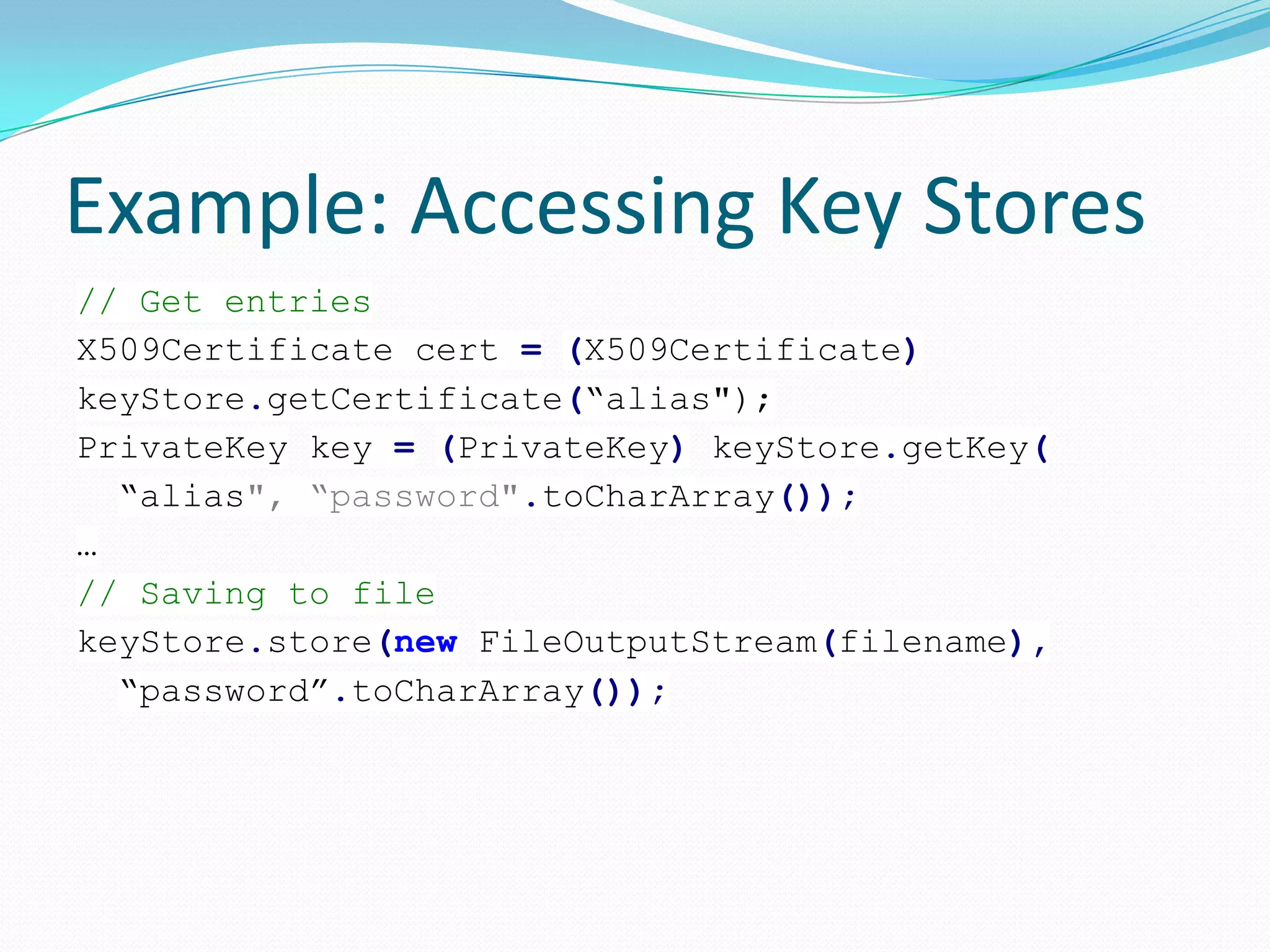
![Serializing a Key
Key key = …; // PrivateKey or PublicKey
byte[] encodedKey = key.getEncoded();
…
X509EncodedKeySpec keySpec =
new X509EncodedKeySpec(encodedKey);
KeyFactory keyFactory =
KeyFactory.getInstance("RSA");
PublicKey theKey =
keyFactory.generatePublic(keySpec);
// or
PrivateKey theKey =
keyFactory.generatePrivate(keySpec);](https://image.slidesharecdn.com/security-bzaid-2009-01-13-100620020512-phpapp01/75/Security-via-Java-26-2048.jpg)
![Serializing a Certificate
X509Certificate cert = …;
byte[] encCert = cert.getEncoded();
…
ByteArrayInputStream inputStream =
new ByteArrayInputStream(encCert);
CertificateFactory factory =
CertificateFactory.getInstance("X.509");
X509Certificate theCert = (X509Certificate)
factory.generateCertificate(inputStream);](https://image.slidesharecdn.com/security-bzaid-2009-01-13-100620020512-phpapp01/75/Security-via-Java-27-2048.jpg)
